Hello friends! I hope you are doing great. Sometimes when we go to see historical sites, it feels like we take a one-way ticket to the past and dive into the heart of history! When I see these places, I feel like time has gone back and I am experiencing life from those times up close.
In today's post, I want to introduce you to the city of Kalat near Mashhad.
Besides the tourist attractions of the villages around Kalat and its incredibly pristine and beautiful nature, there is a very famous and sight-worthy place in this city that many come here for: the Sun Palace, or the Nader Palace. It is truly a special place full of history that is worth seeing!
One of the most beautiful and unique palaces in Iran, I can say without a doubt that this is the Sun Palace, which is also called the Sun Mansion. This palace was ordered to be built by Nader Shah Afshar at the beginning of his reign.
The Sun Palace is located right in the middle of a large and beautiful garden. According to the people who were there and explained it to us, the building was supposed to be three stories and in a way serve as the tomb of Nader Shah himself. But, well, before it was completed, Nader Shah was killed and the project remained unfinished.
An interesting point about this palace is that in the inscription inside, verses from the Quran are written, which show that Nader really intended for it to be his burial place.
If you look closely, the carvings of the building have a lot to say.
I want to share the photos step by step as soon as we enter the palace grounds. Let's go see together.
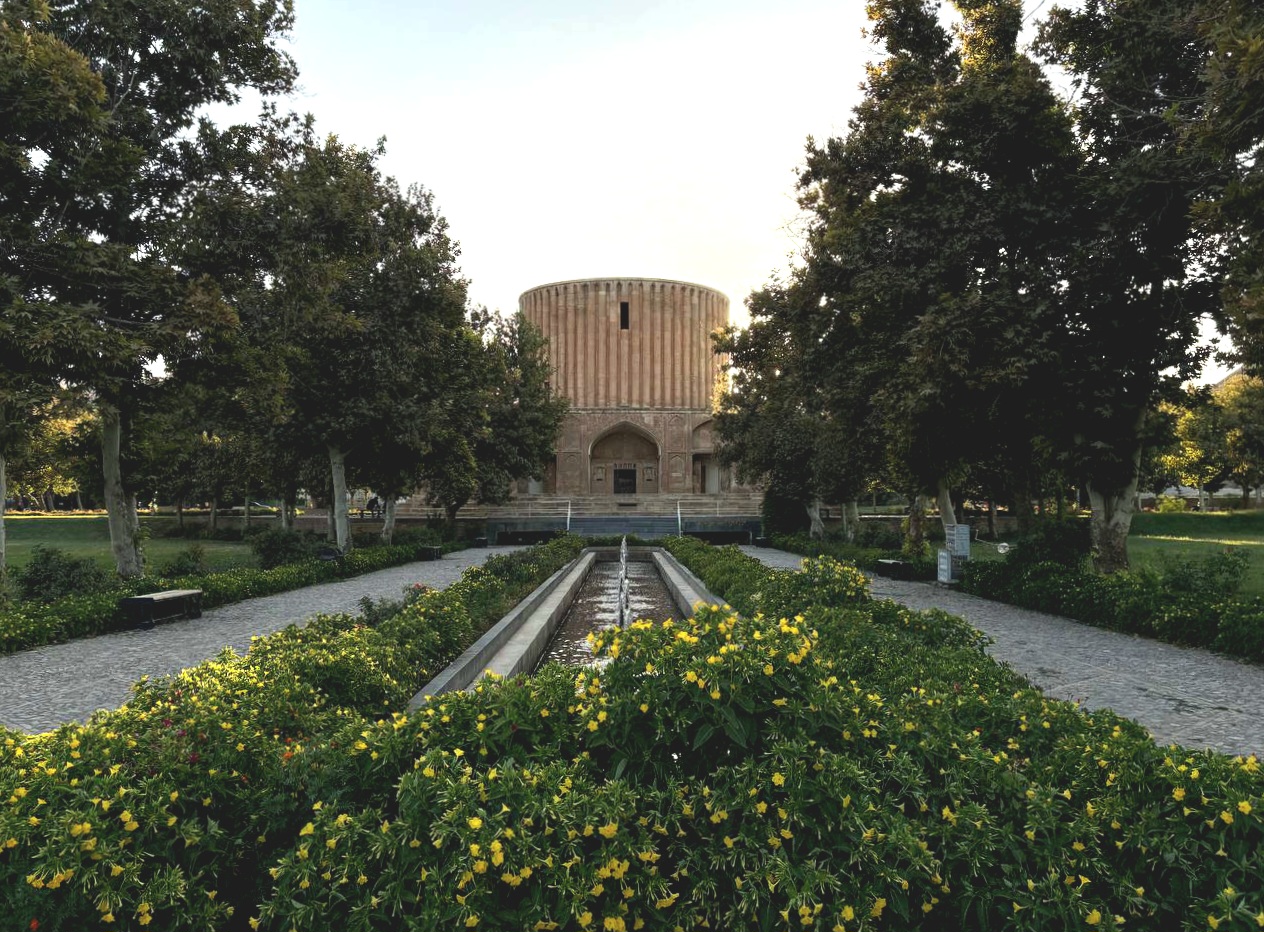
The entrance door is beautifully landscaped with this view.
Its green space was designed with taste. On both sides of the path, tall trees stood that revived the feeling of cool shade in one's mind. A stream of water flowing in the middle of the garden and yellow flower bushes beautifully added to the scenery and infused the space with color and the scent of life.
At the end of the path, as you can see, the main building, which has a cylindrical shape, is visible. I was walking step by step and taking pictures, which we will see next.
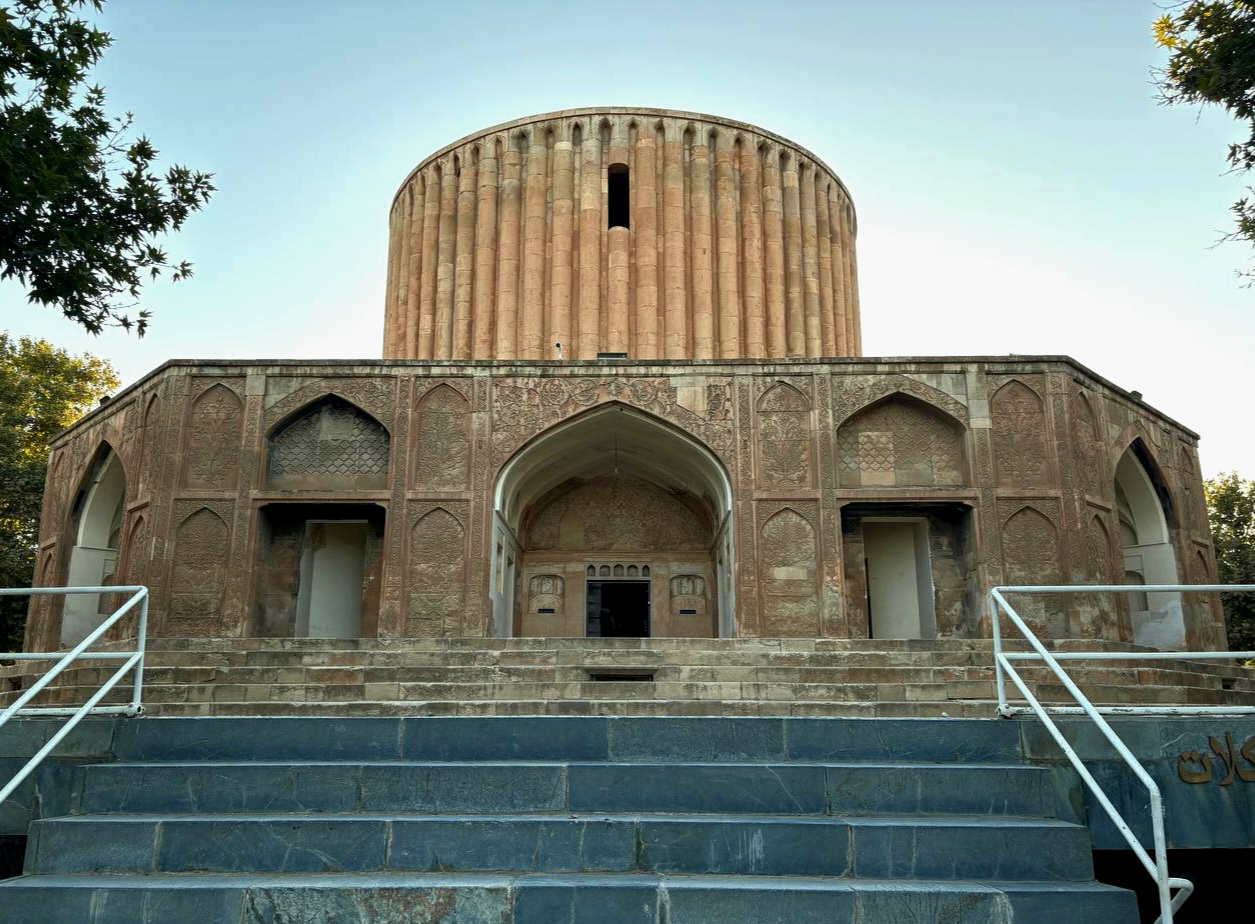

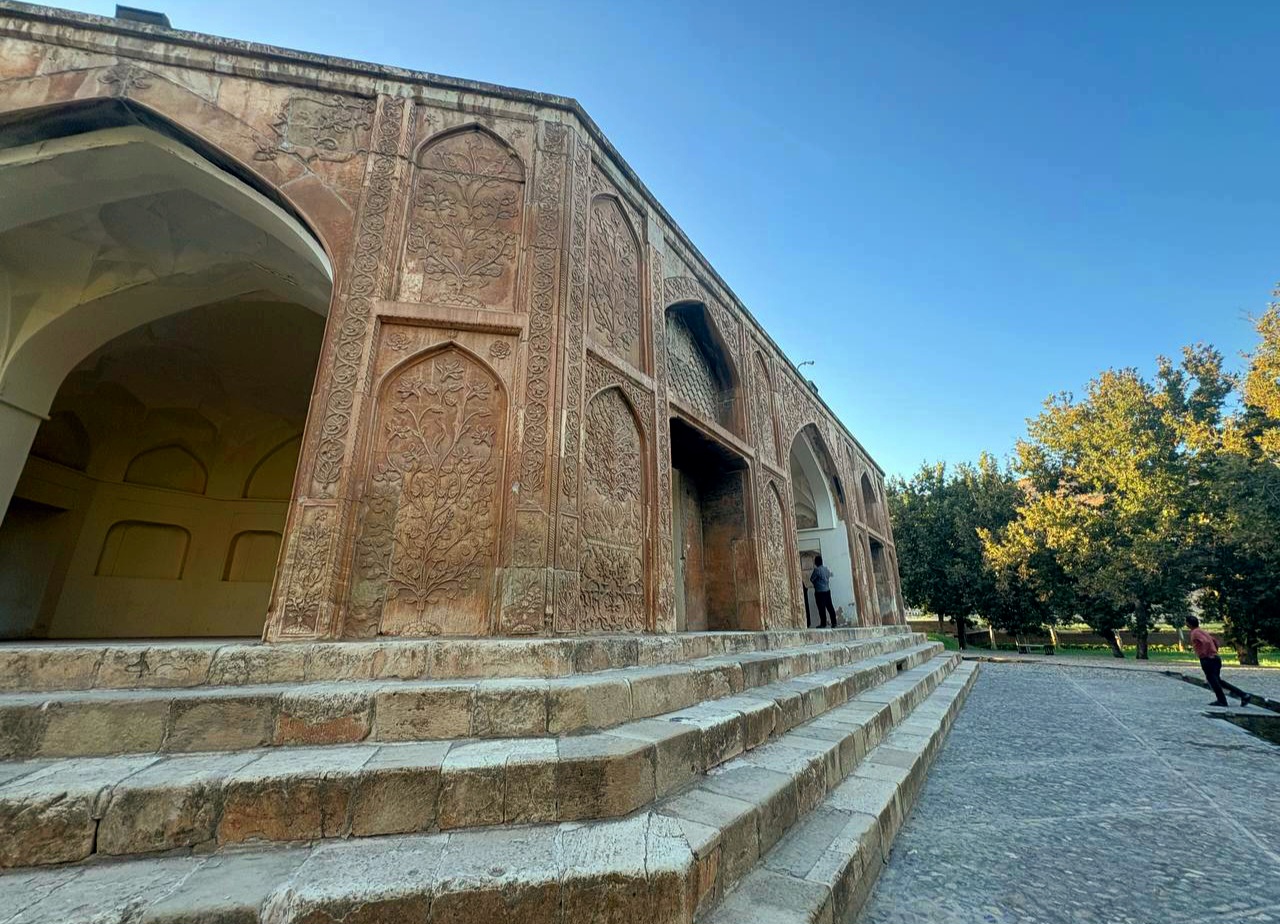
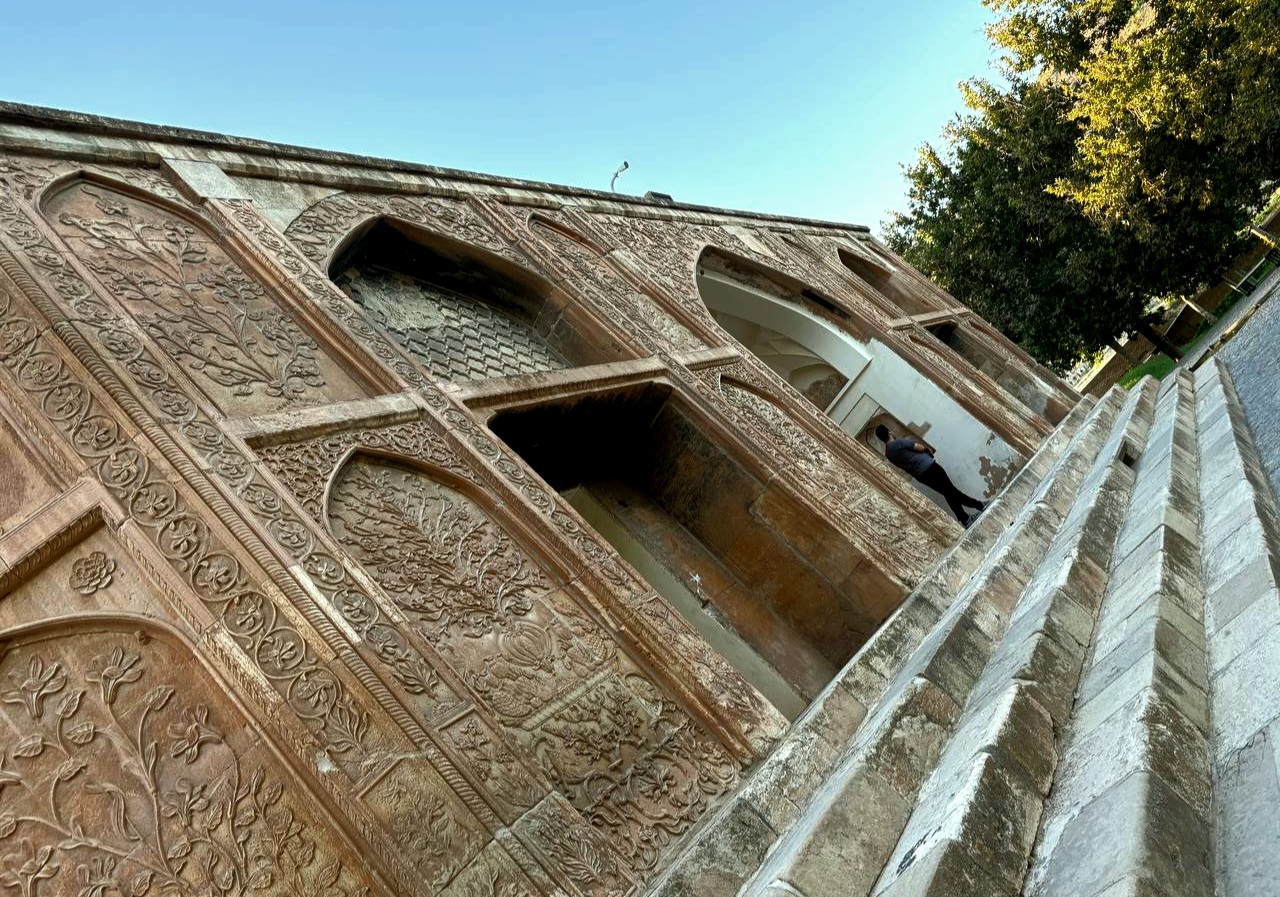
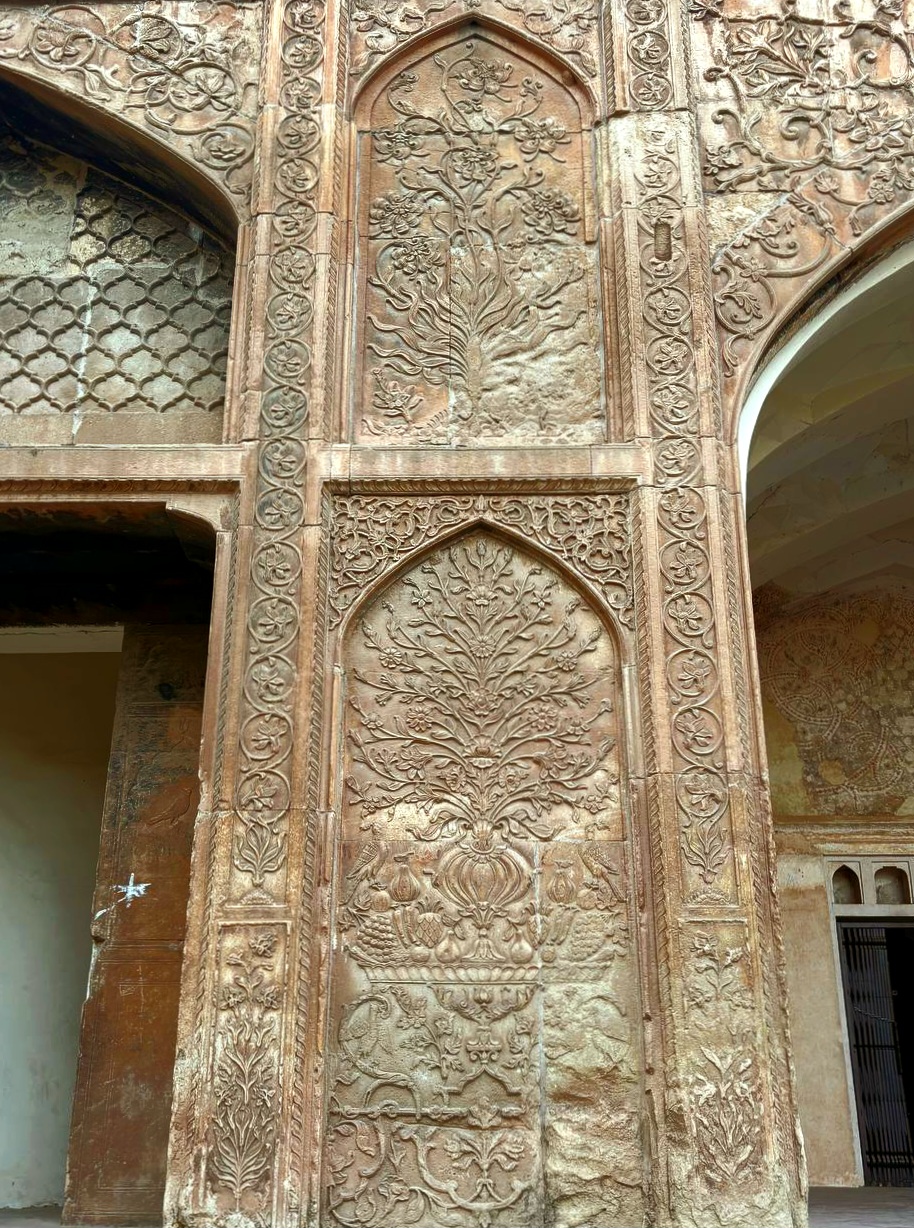
I took photos from a close-up view and several different angles.



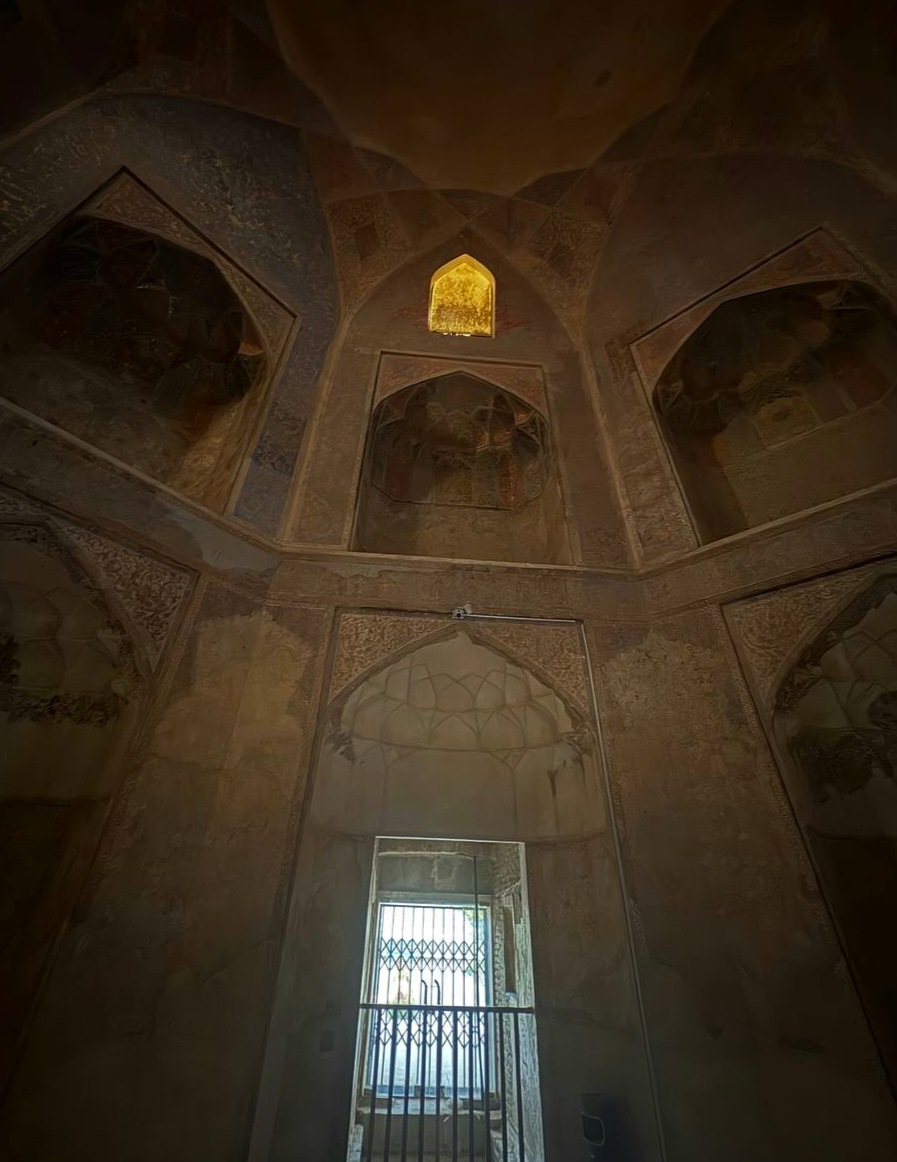
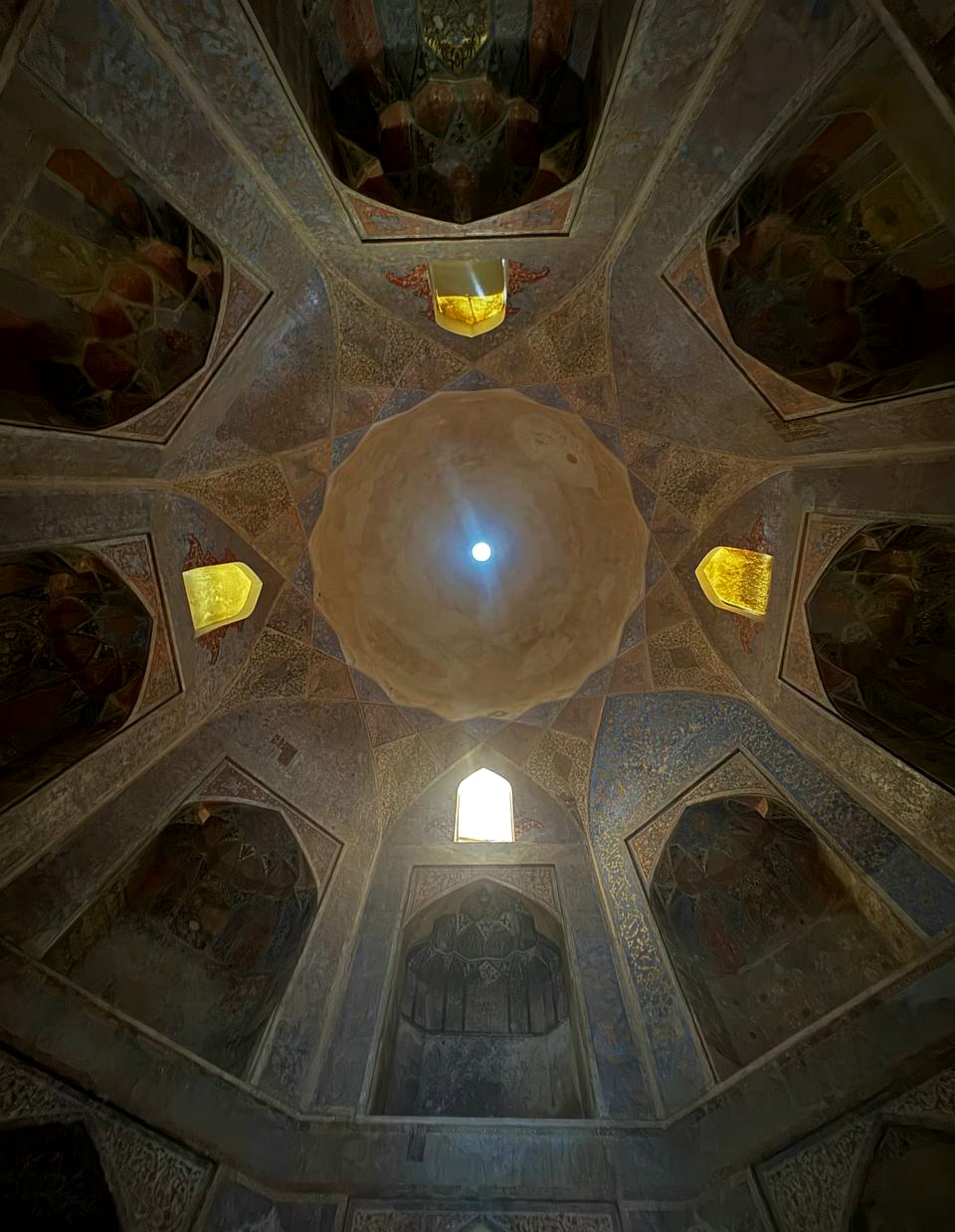
 This ground floor has a cool and dimly lit space with walls made of stone and brick, and there weren't many decorations in it. According to reports, Nader Shah used this floor for storing the treasury, jewels, expensive items, or even for imprisoning some individuals. A narrow staircase leads from this floor to the upper floors, which reach the more main areas of the palace. Since the ground floor is simpler than the upper floors, it is clear that it was not meant to be a living space; it functioned more like a storage room or treasury.
This ground floor has a cool and dimly lit space with walls made of stone and brick, and there weren't many decorations in it. According to reports, Nader Shah used this floor for storing the treasury, jewels, expensive items, or even for imprisoning some individuals. A narrow staircase leads from this floor to the upper floors, which reach the more main areas of the palace. Since the ground floor is simpler than the upper floors, it is clear that it was not meant to be a living space; it functioned more like a storage room or treasury.
After this, we went to the basement and the anthropology museum and the main beauties of the palace.
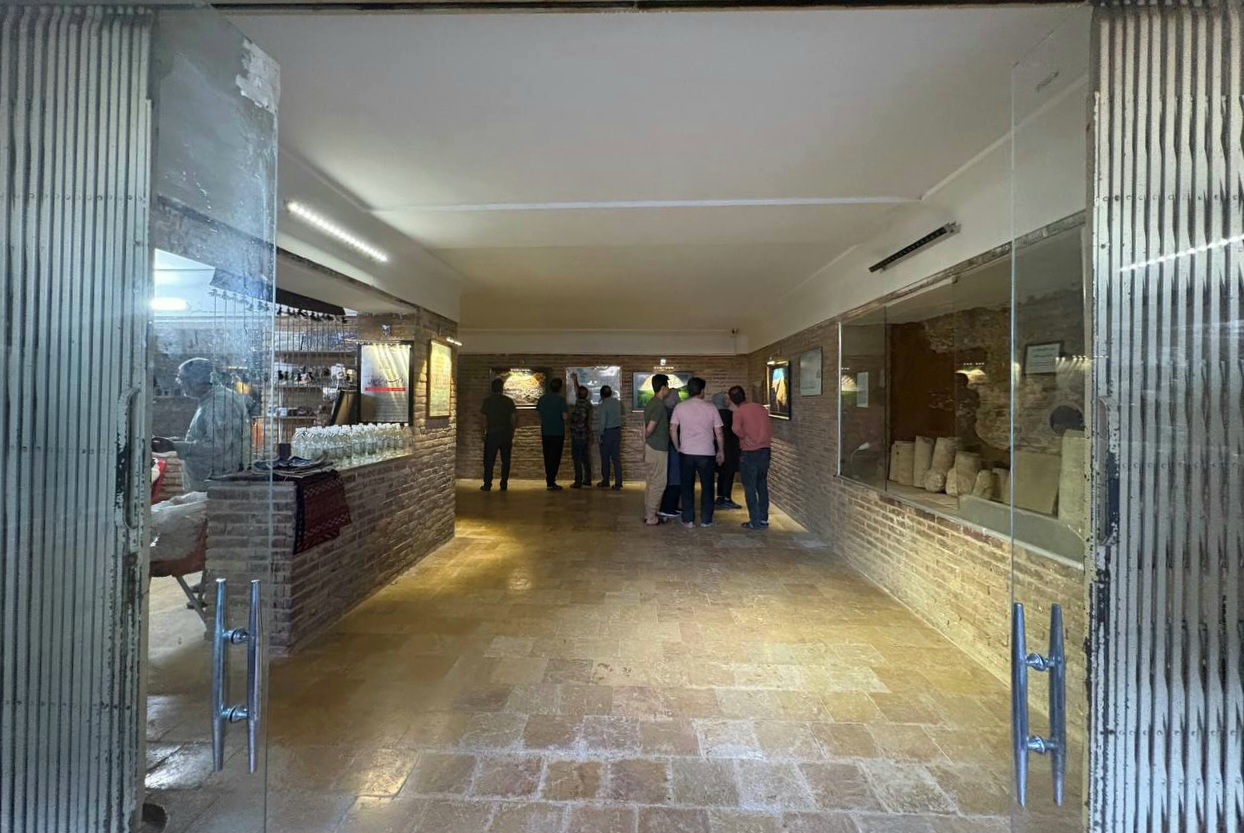

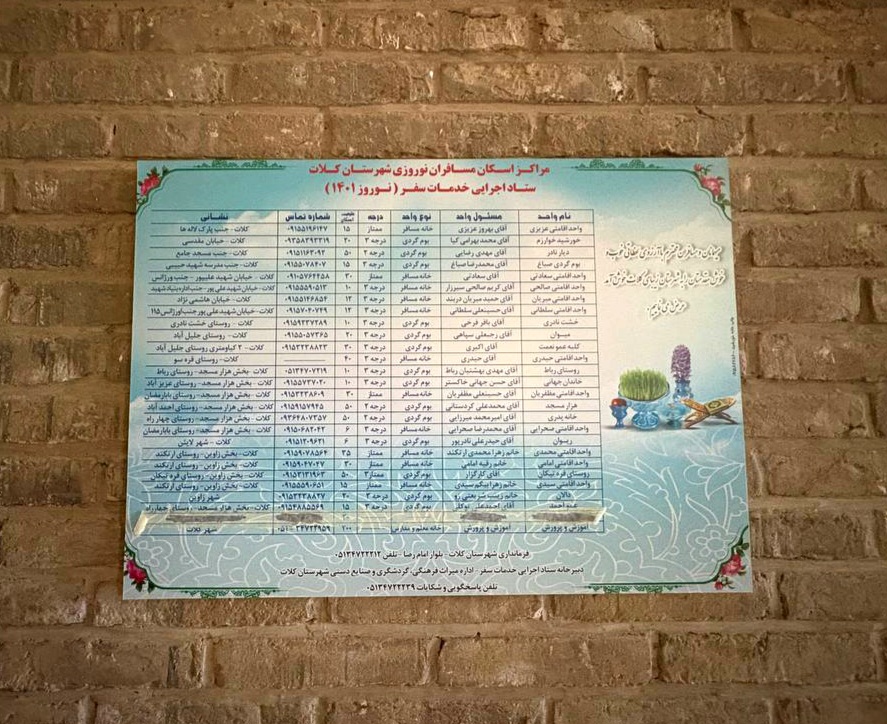
At first, there was a sign to guide the booths and also a sign of accommodation centers in Kalat and the surrounding areas and contact numbers for travelers who were coming here. And then there were signs of tourist attractions, waterfalls, and villages around Kalat Nader that we will see together.


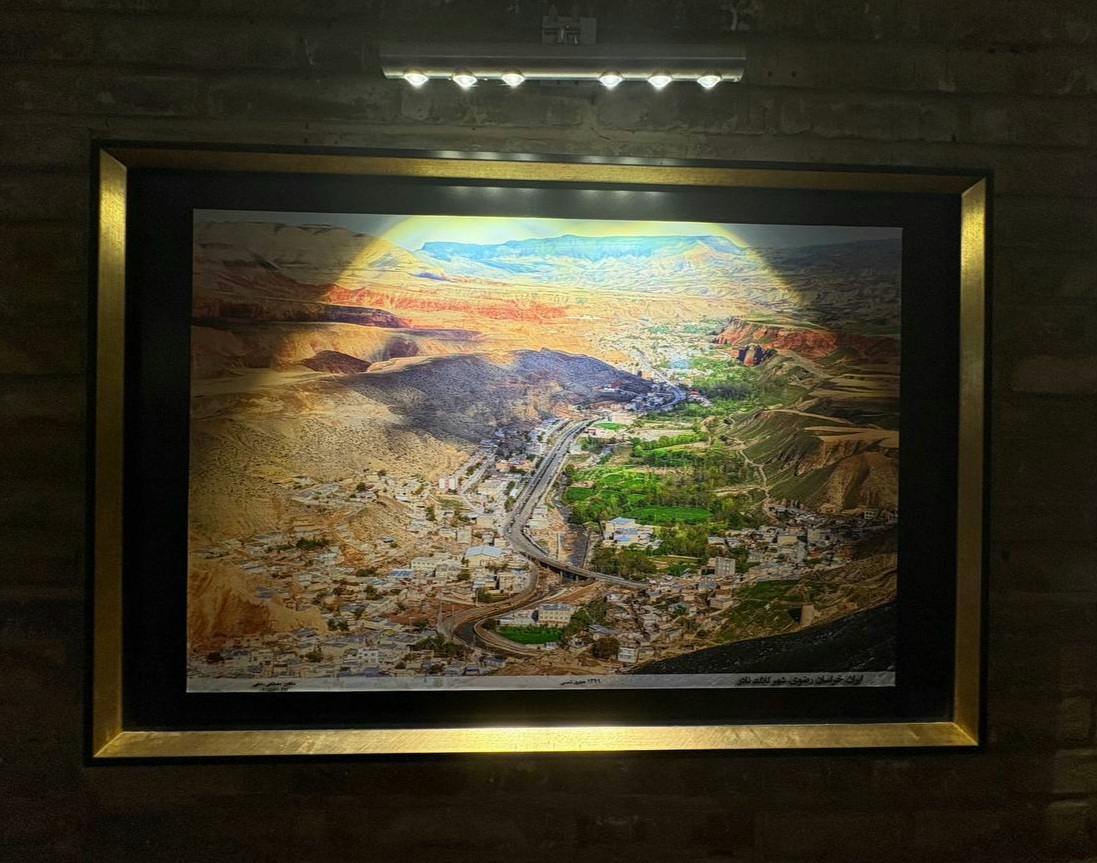
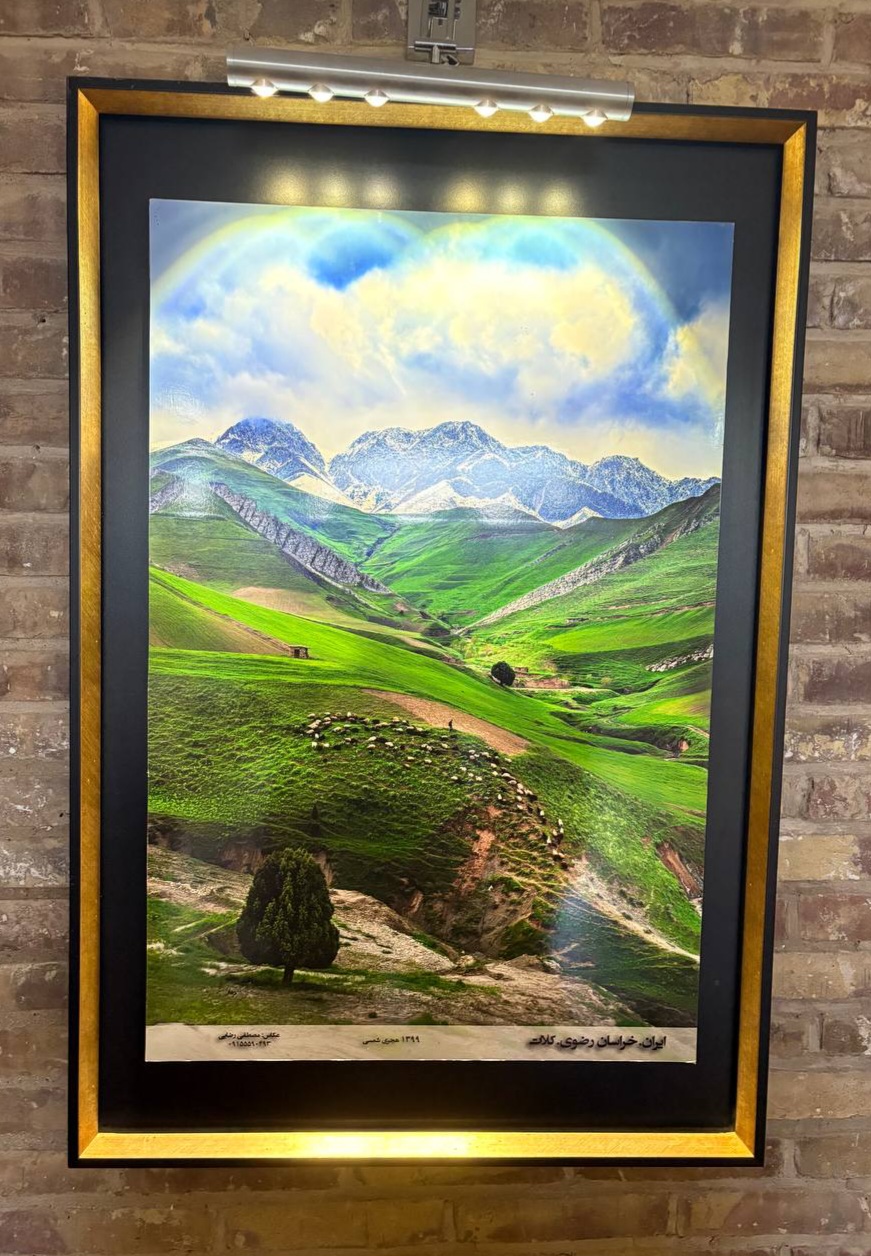
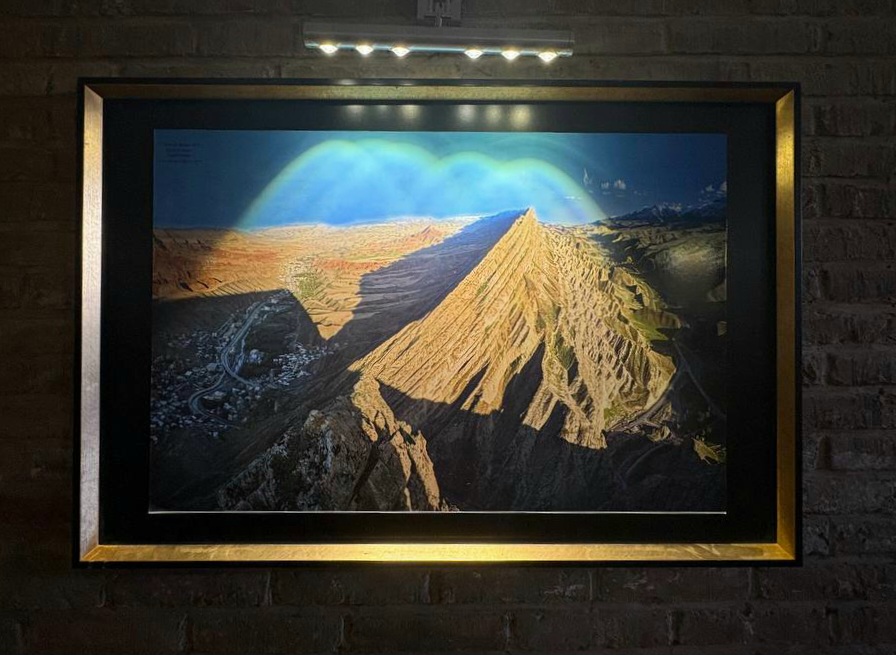
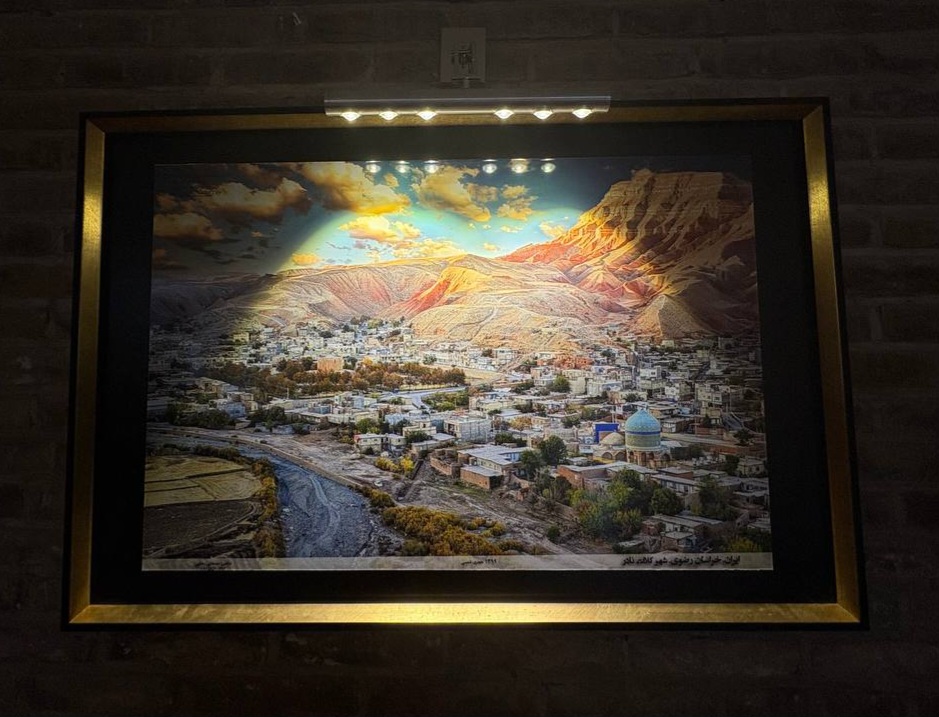
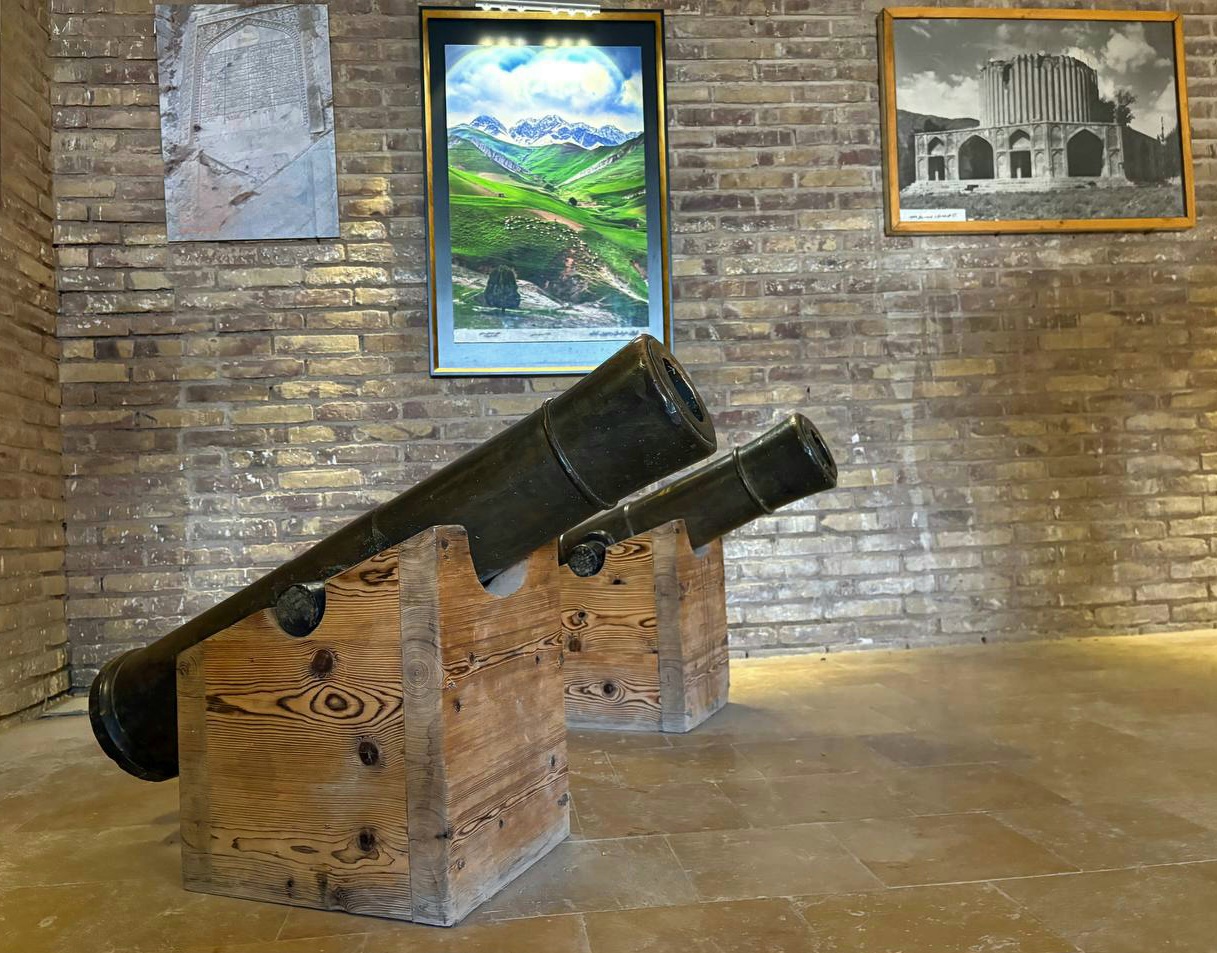
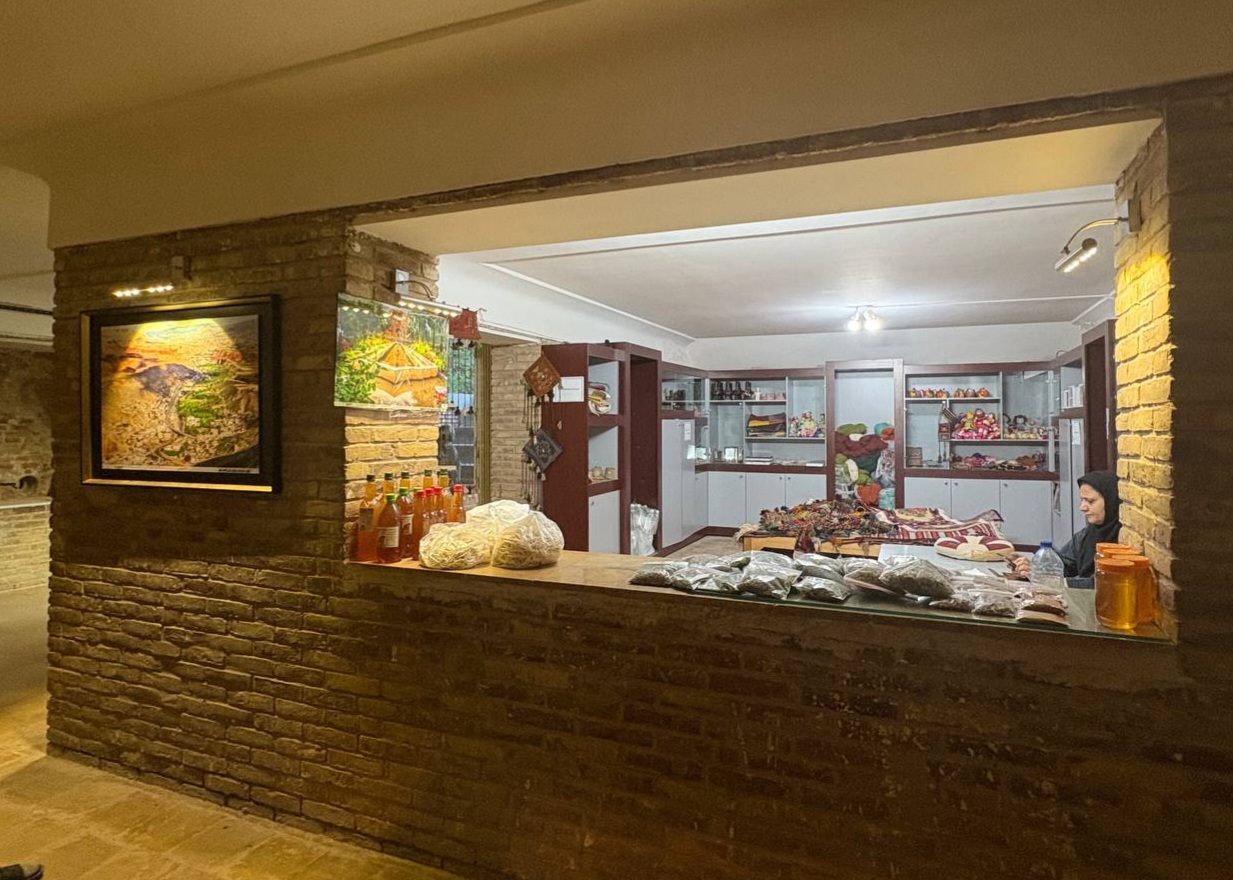

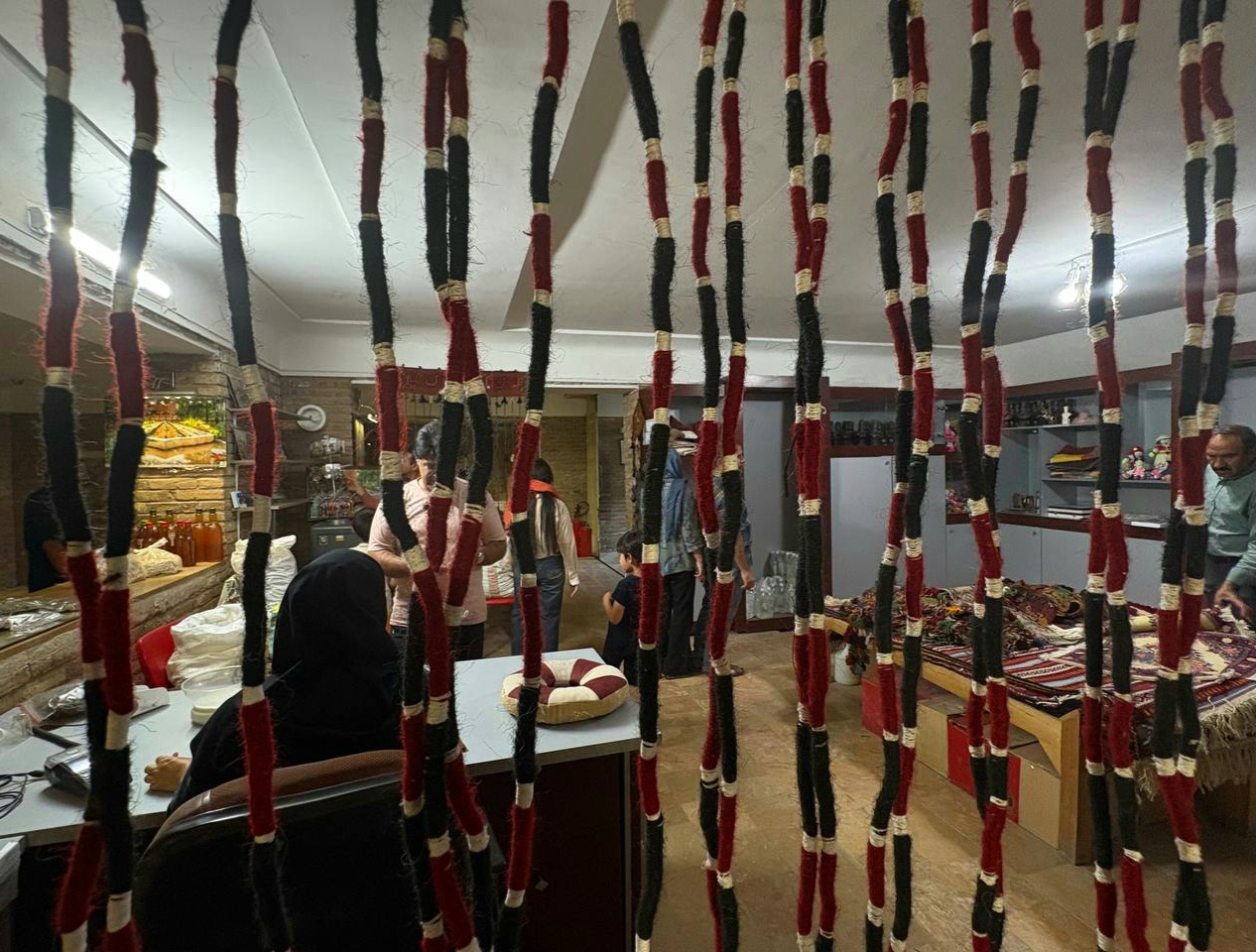
These are photos from this part that everyone was watching, and there was a store here that symbolized the ancient artifacts of Kalat and handicrafts, etc. And as a souvenir, it was possible to buy from here.
After this, we went to another part that was very interesting to me. Let's see together in the continuation.
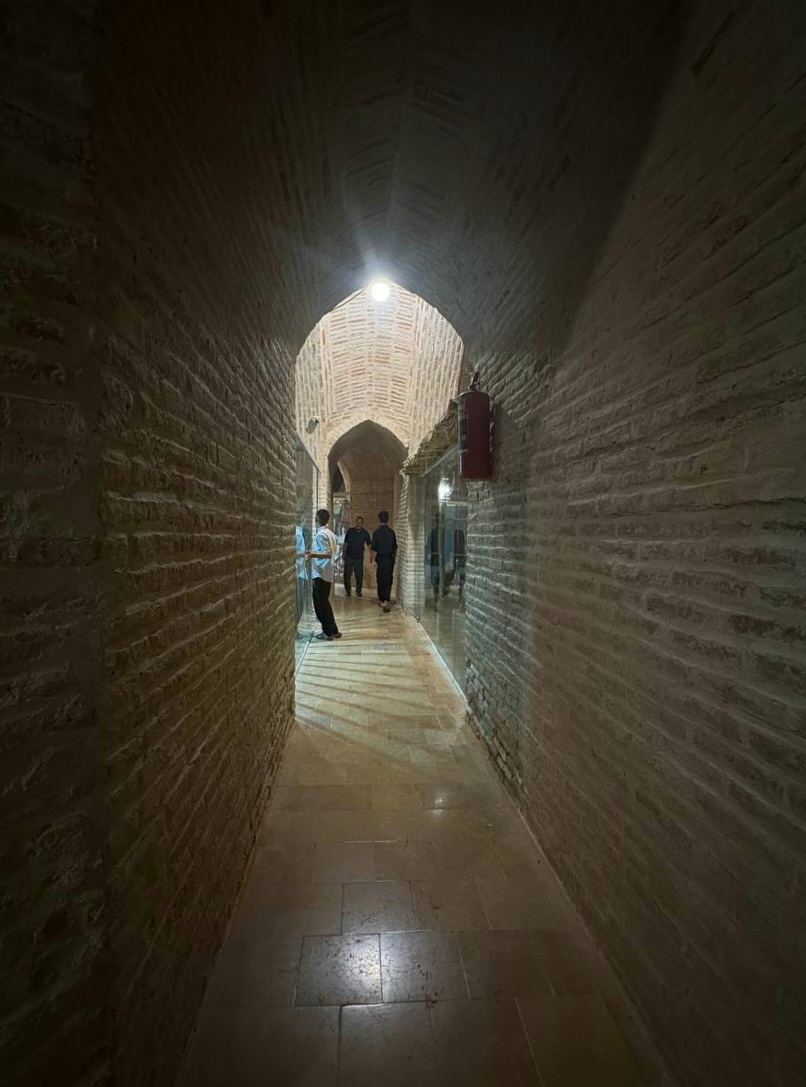
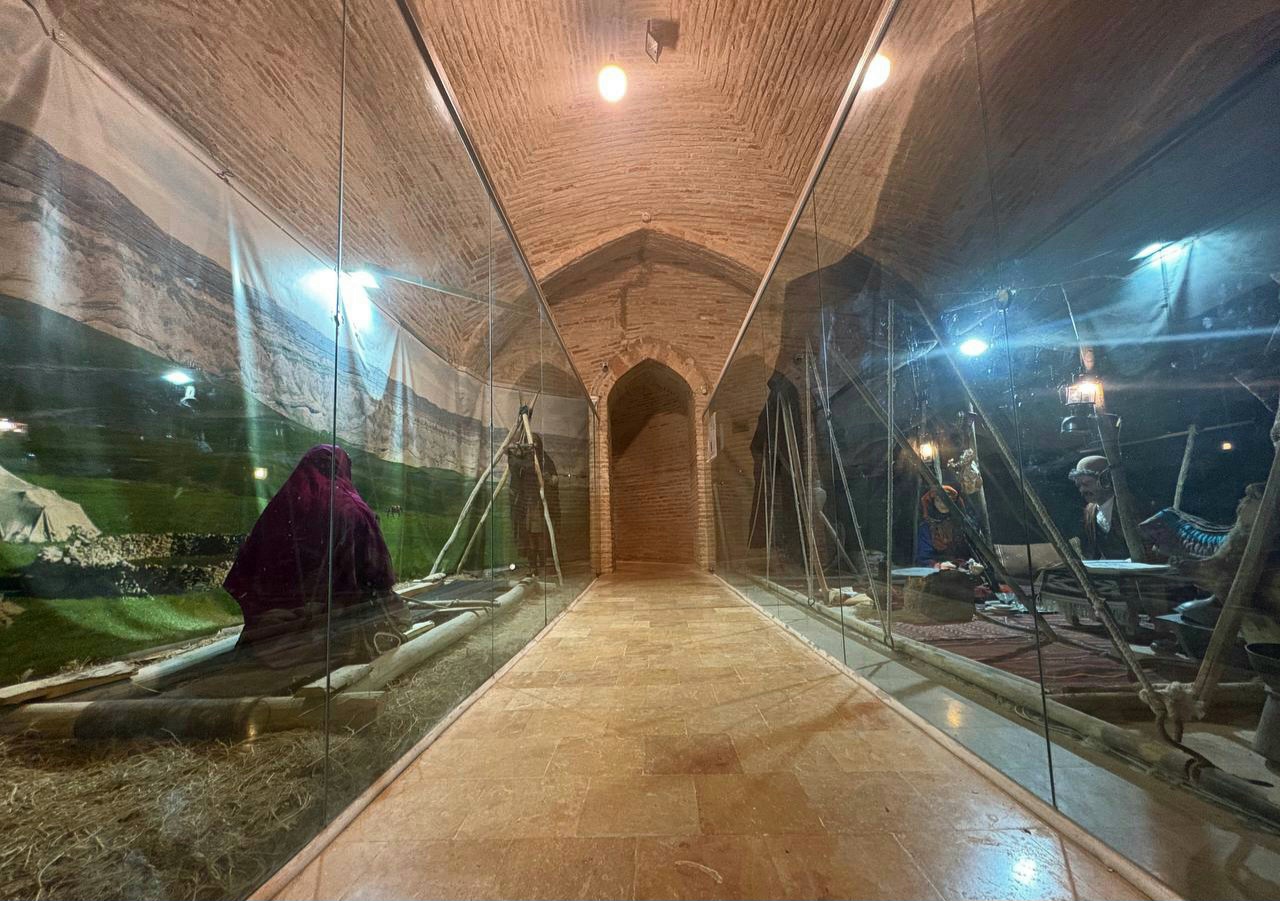
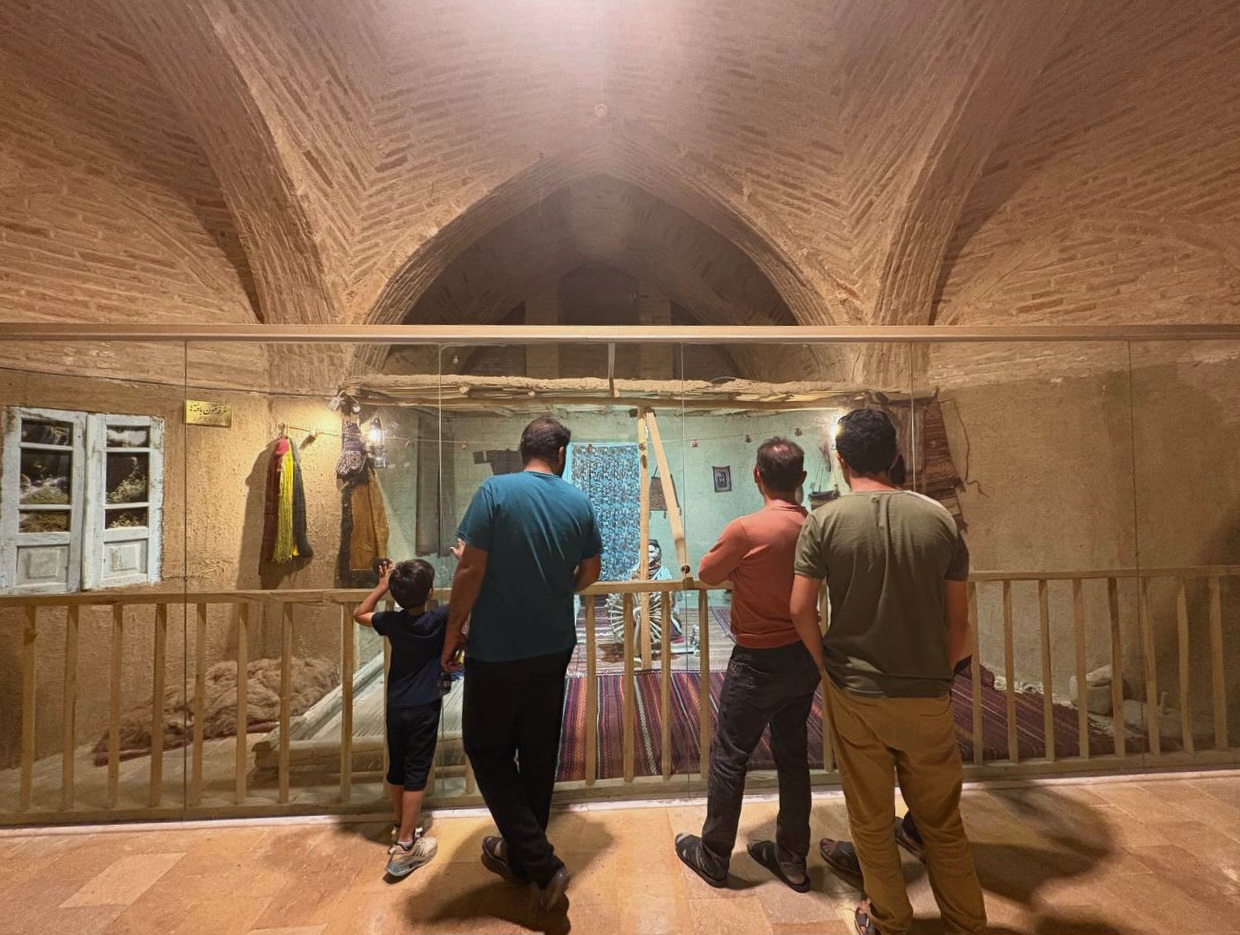
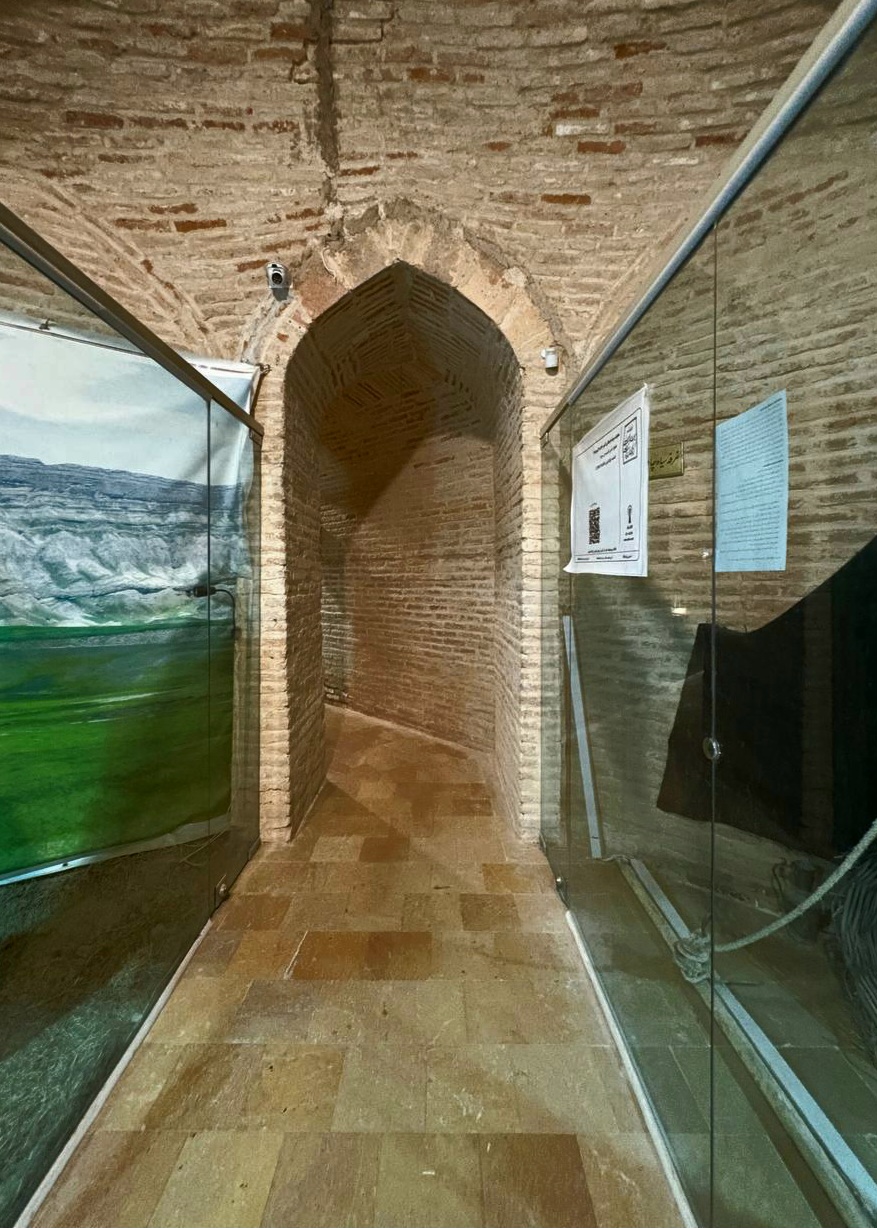
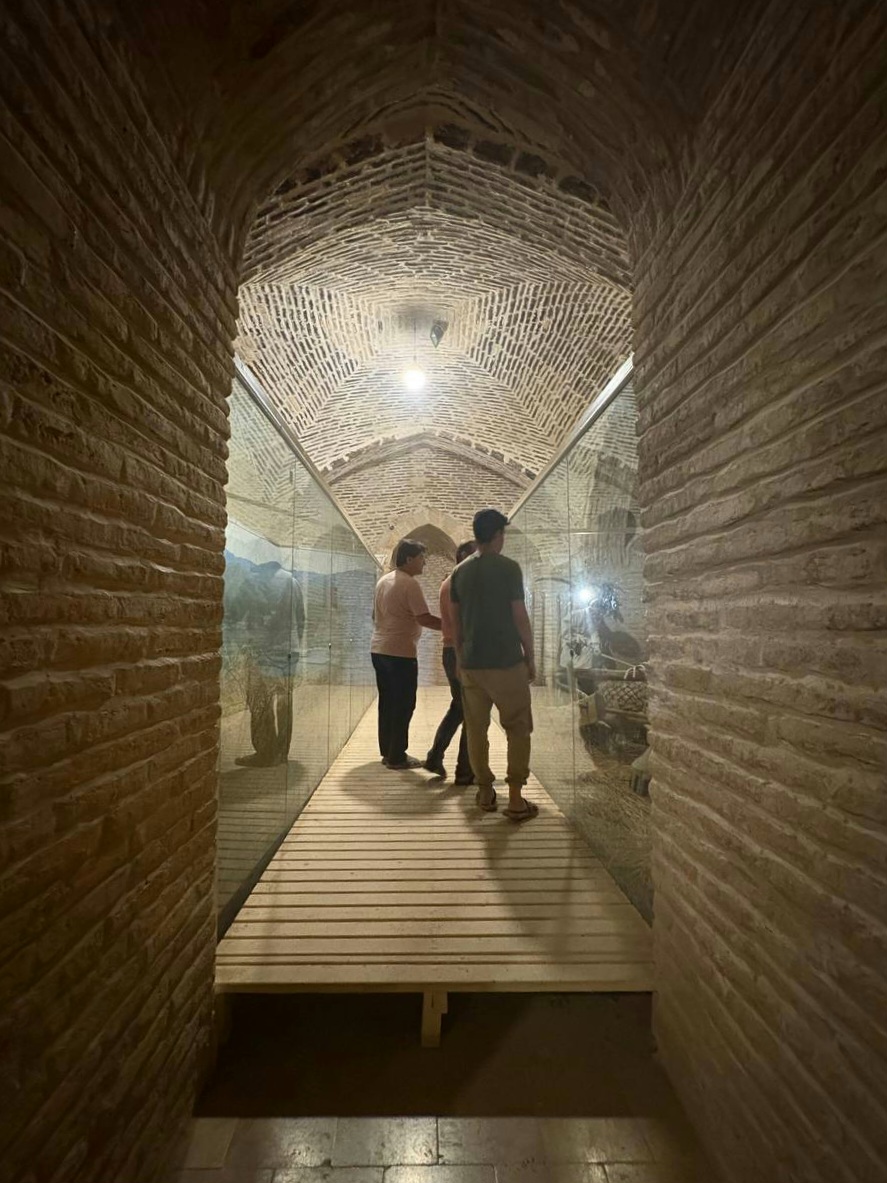
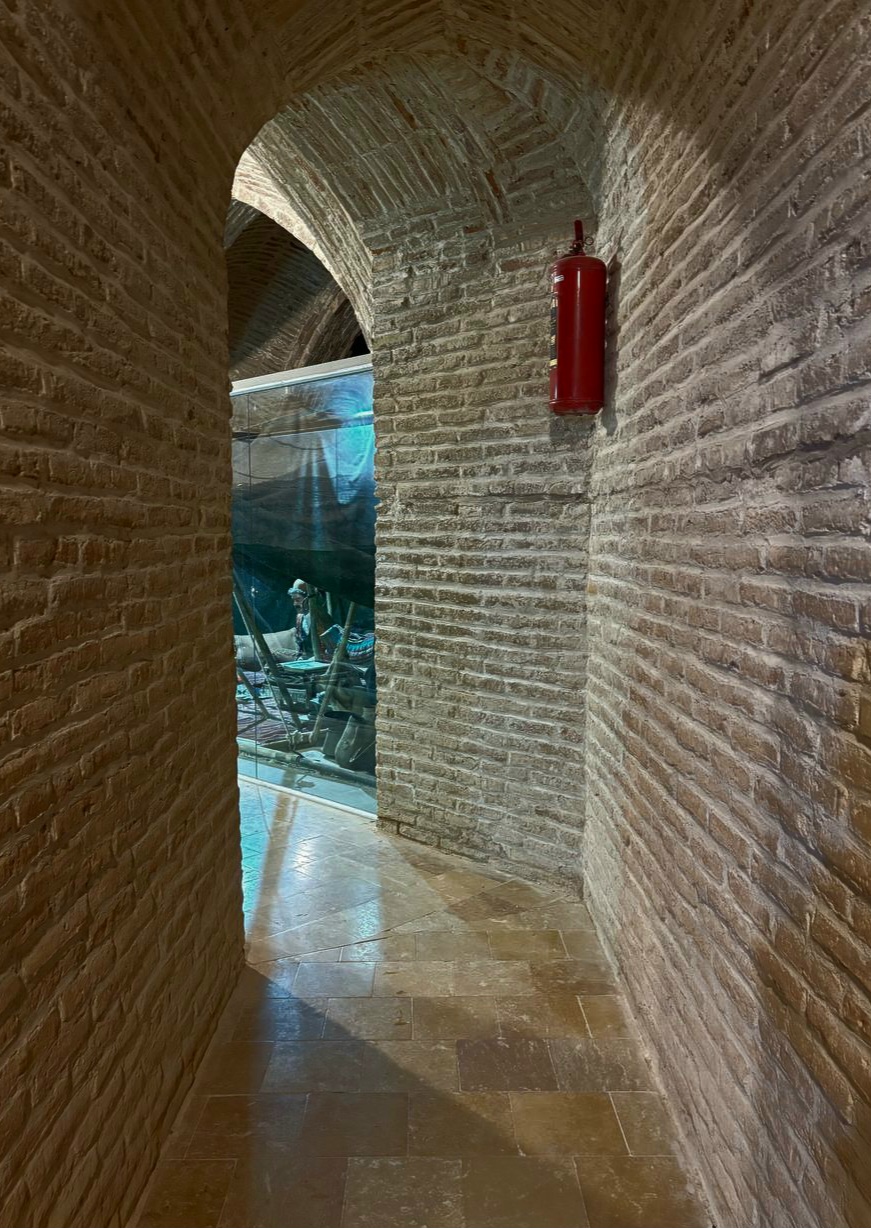
In the anthropology museum of the Sun Palace, there are reconstructed scenes that make it feel like you are walking inside an old house in the heart of the village of Kalat. For example, you enter a space where a Korsi is placed in the middle of the room, on local handwoven carpets, with velvet cushions beside it. An oil lamp is lit in the corner of the room, and a charcoal samovar is bubbling on a tripod, as if someone is about to pour tea into narrow glasses any moment now, and examples similar to these will be seen later.
There are narrow corridors between each two opposite booths.
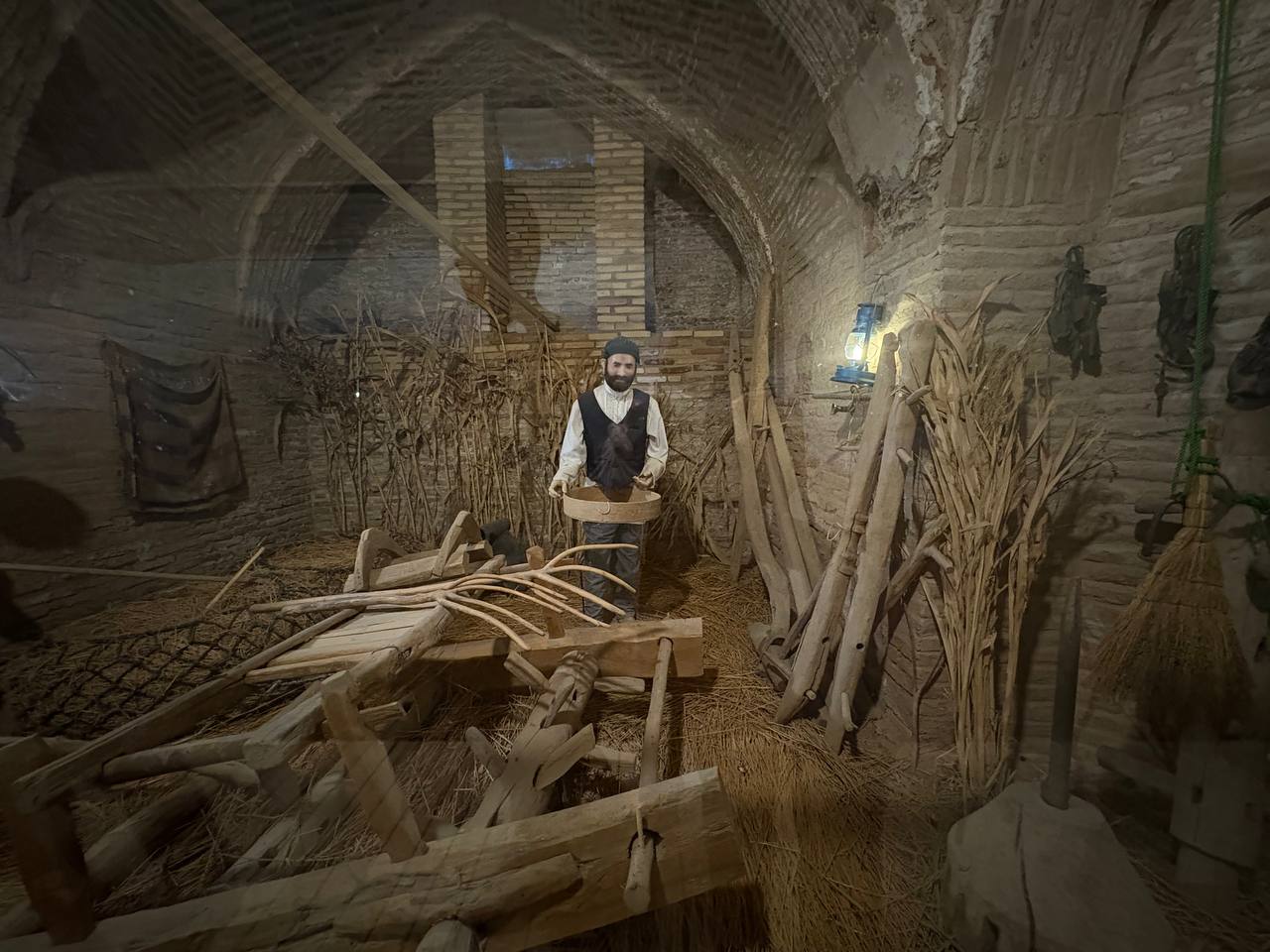

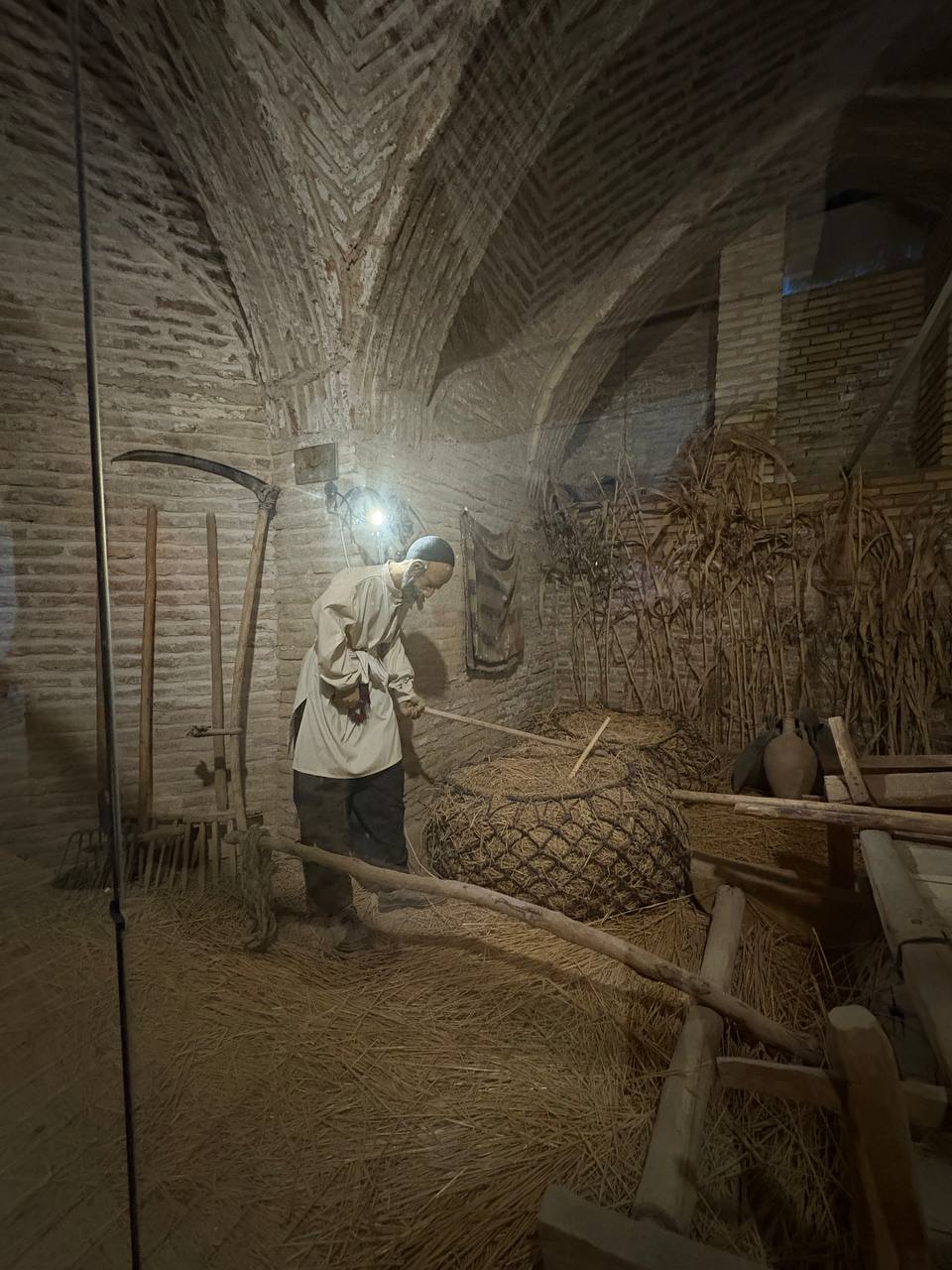
In the Anthropology Museum of the Sun Palace, parts of the space are designed as showcases and reconstructed scenes so that visitors and people can become familiar with the traditional way of life, customs and traditions, clothing, and local occupations of the people in the region.
For example, scenes of traditional rural houses have been recreated with old utensils. With clay dishes, stone pots, clay ovens, and copper utensils.
Rural living rooms with handwoven carpets, oil lamps, and local hospitality items.
In another corner, traditional women's and men's clothing from the Kalat region with special decorations, colorful fabrics, and local embroideries.
Examples of scarves, shawls, and handmade vests, and...
Traditional wedding attire and clothing specific to various rituals and celebrations.
Reconstruction of scenes from traditional wedding ceremonies with the bride and groom, local instruments, and special ceremony attire.
Images and sculptures of specific religious and ethnic rituals of the region.
Traditional occupations and handicrafts
Tools of blacksmithing, carpentry, basket weaving, carpet weaving, felt making, and pottery along with explanations about their use and methods of production.
Examples of carpets and kilims woven in Kalat, with local patterns and designs.
Traditional livestock and agricultural tools such as sickles, axes, water skins, and wooden plows, etc.
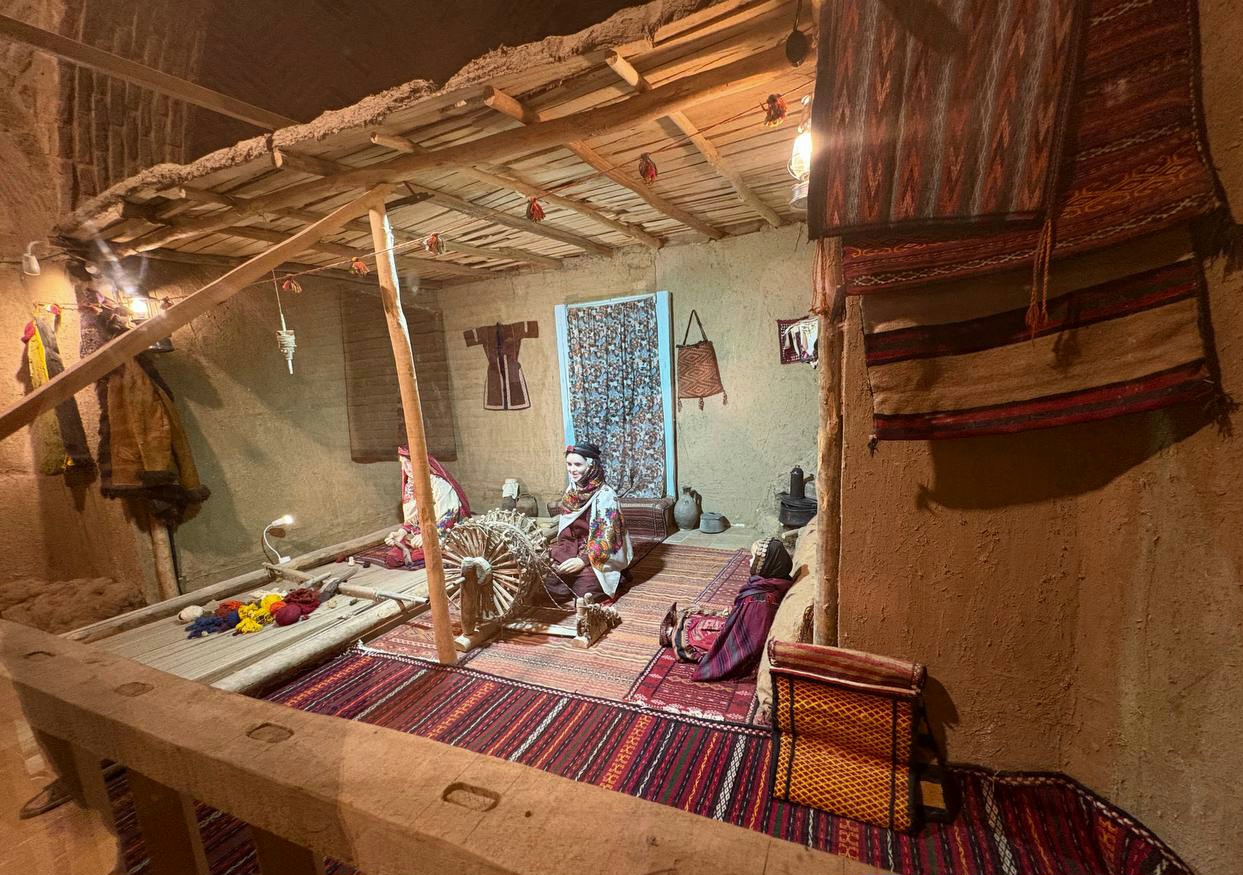

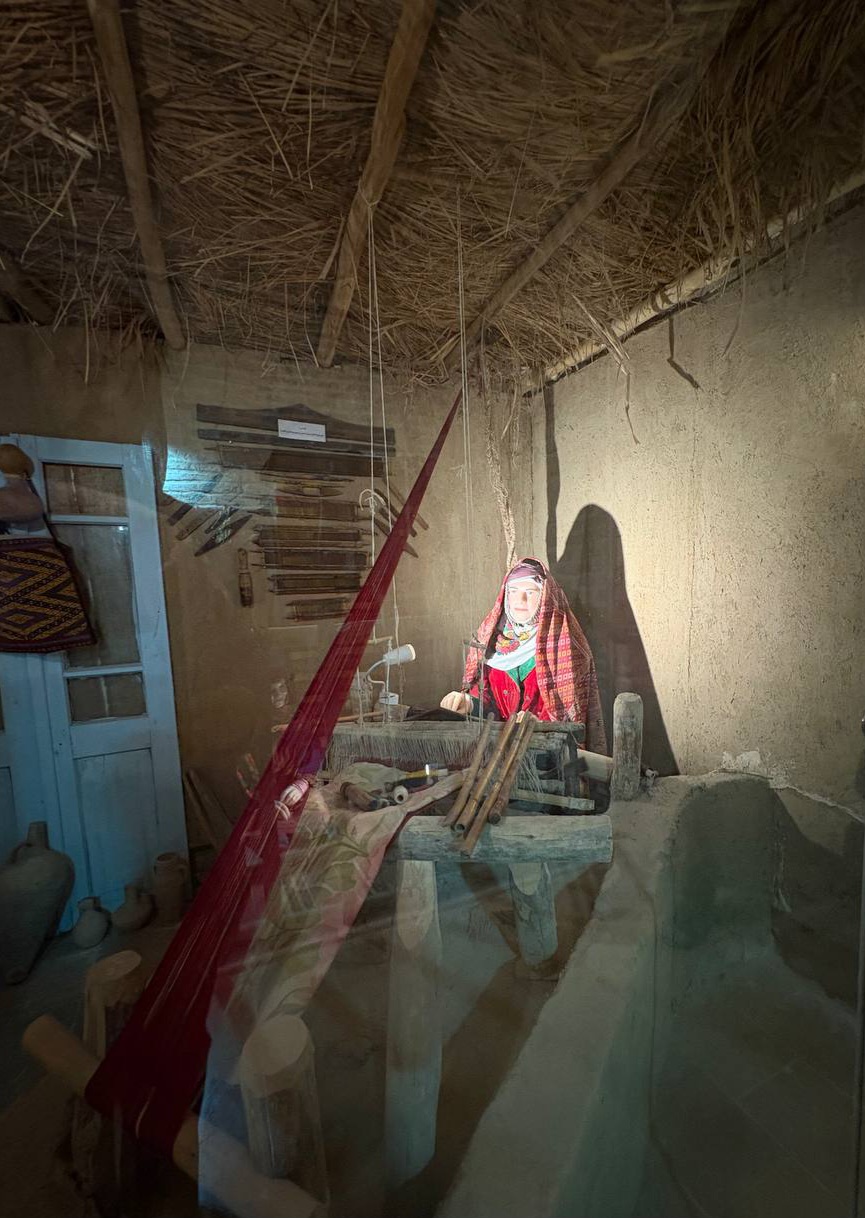
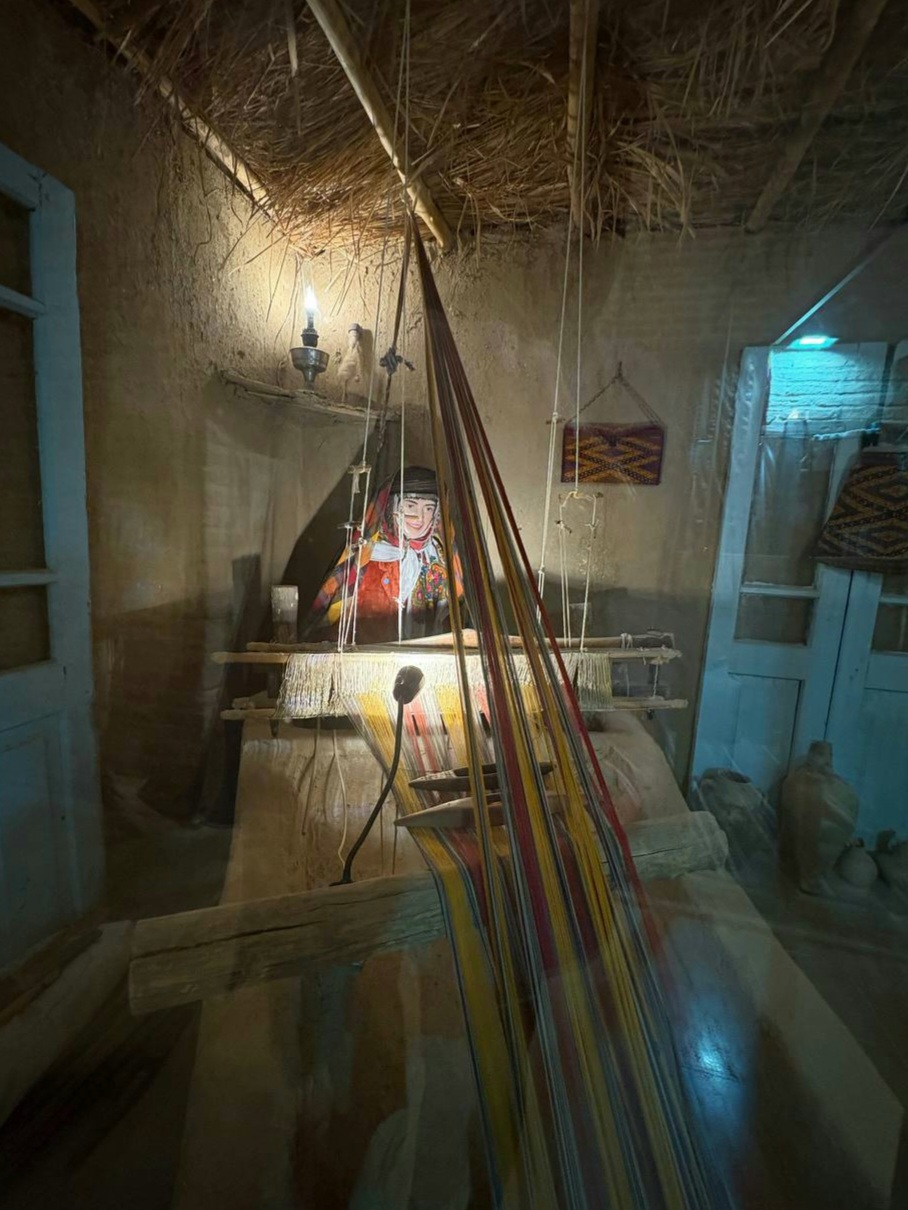



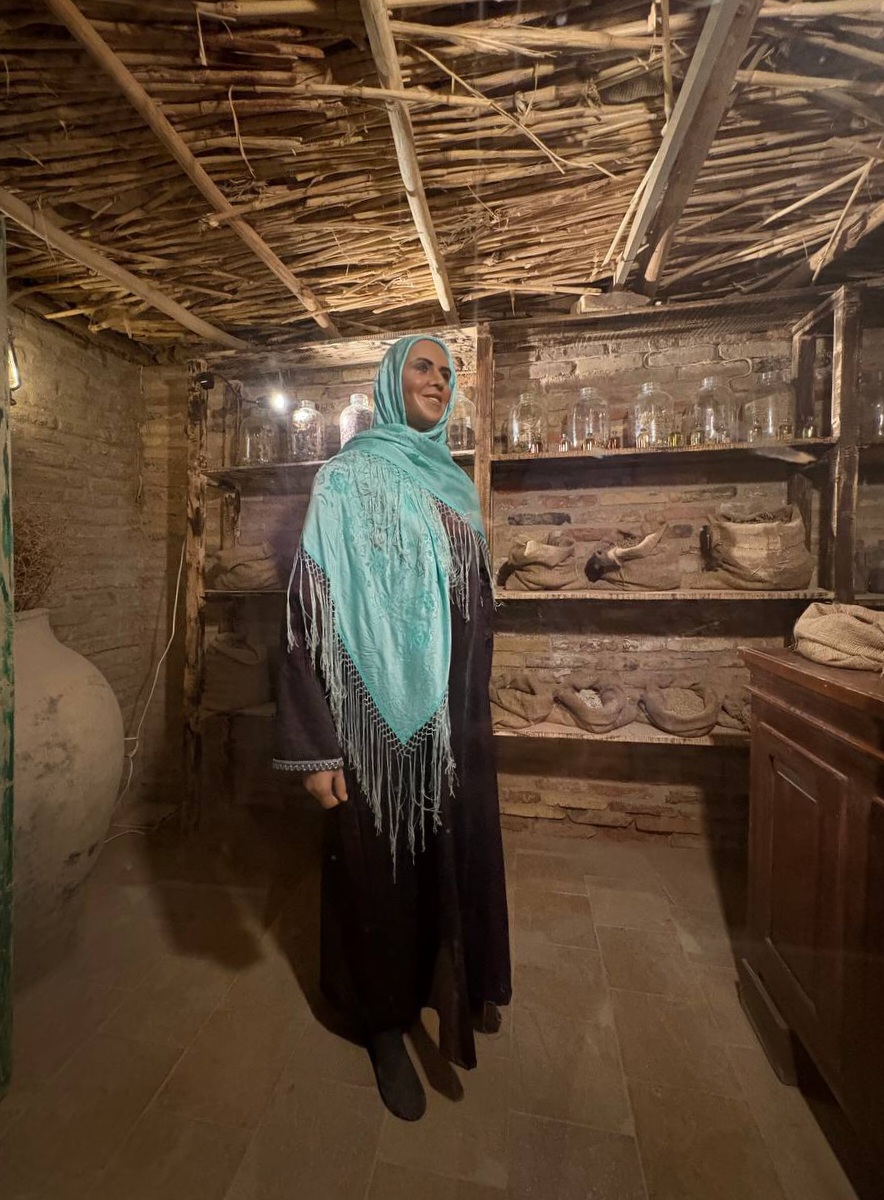


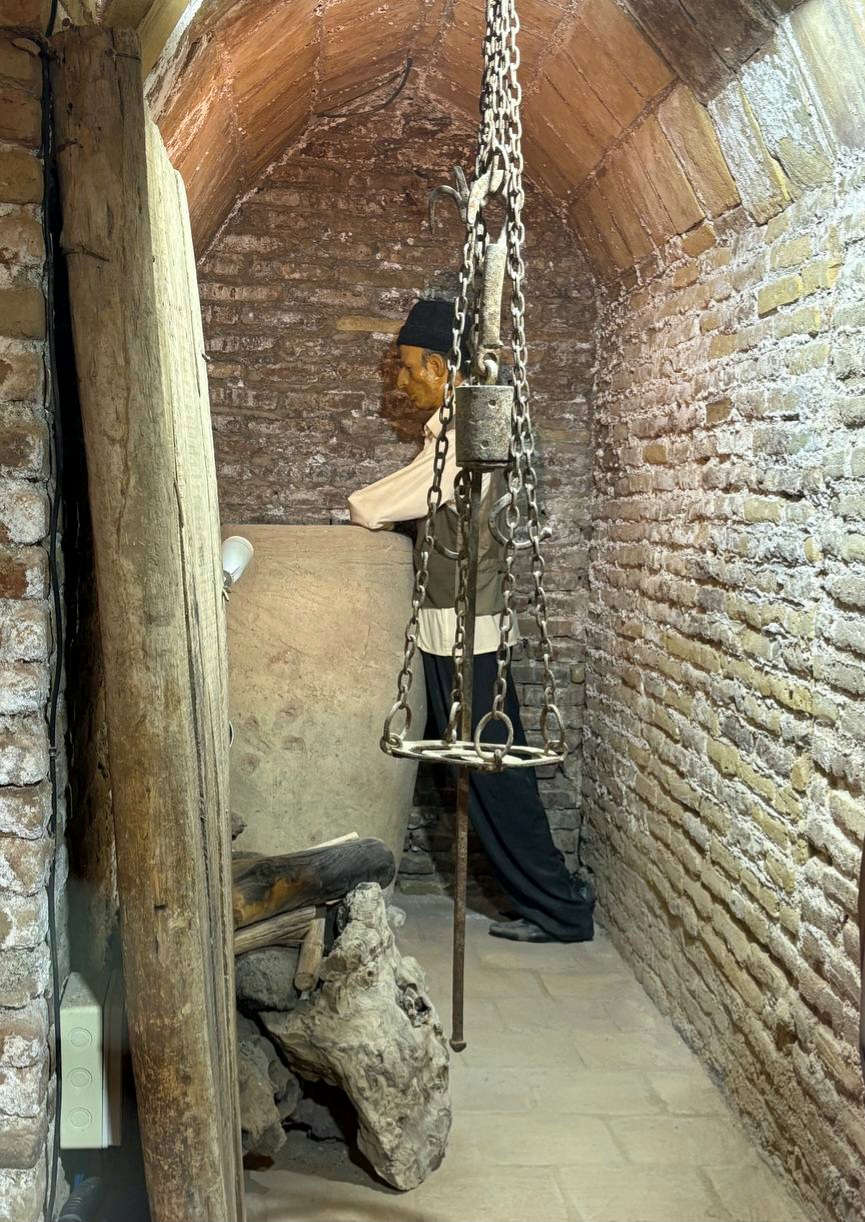
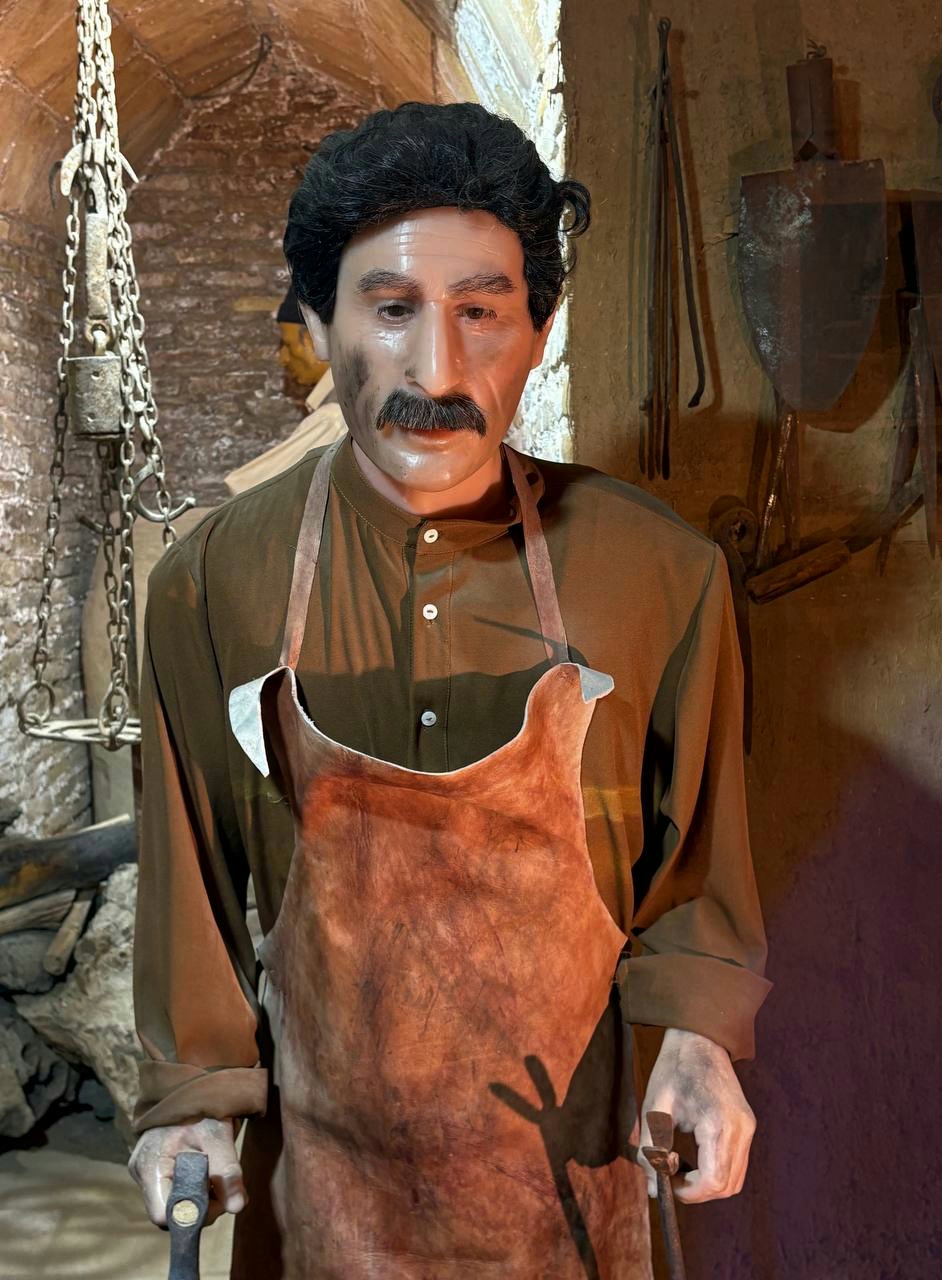
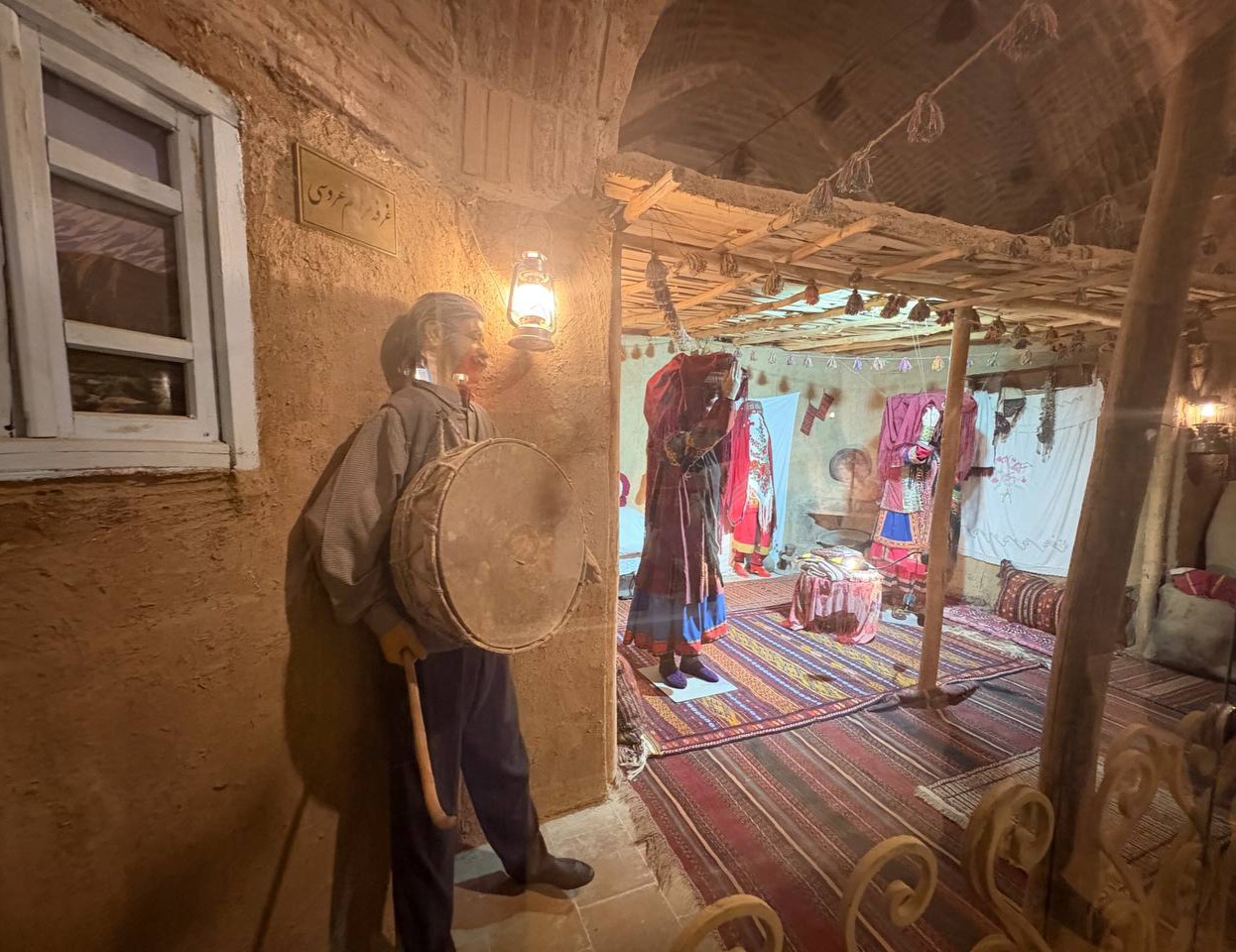
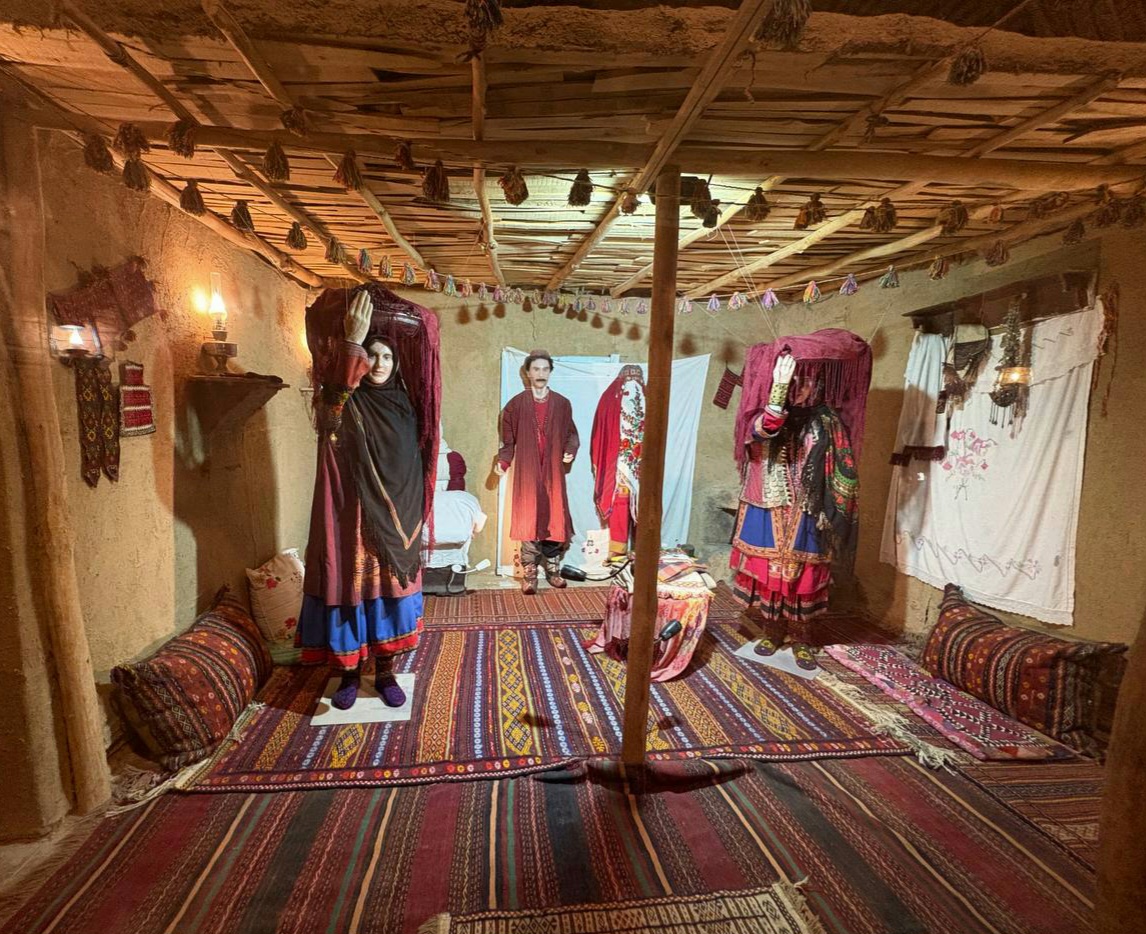

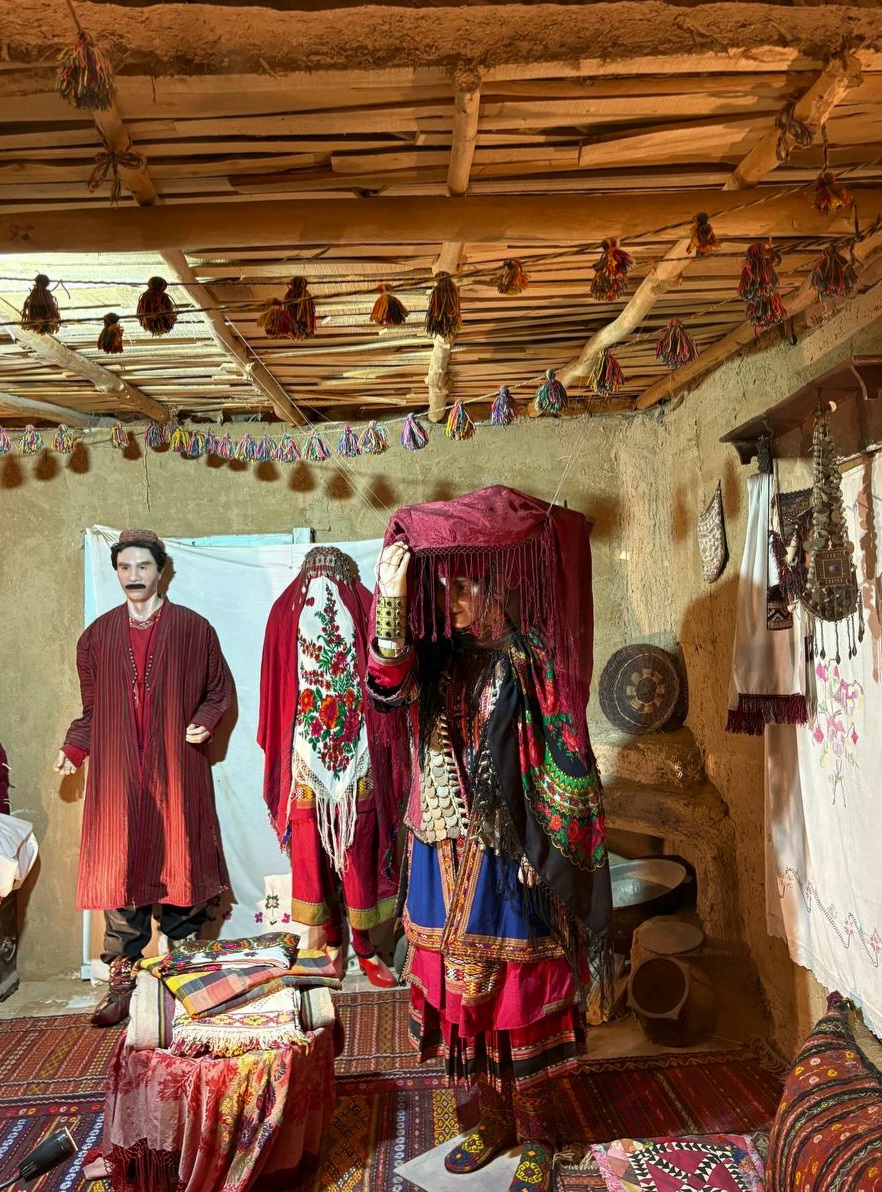

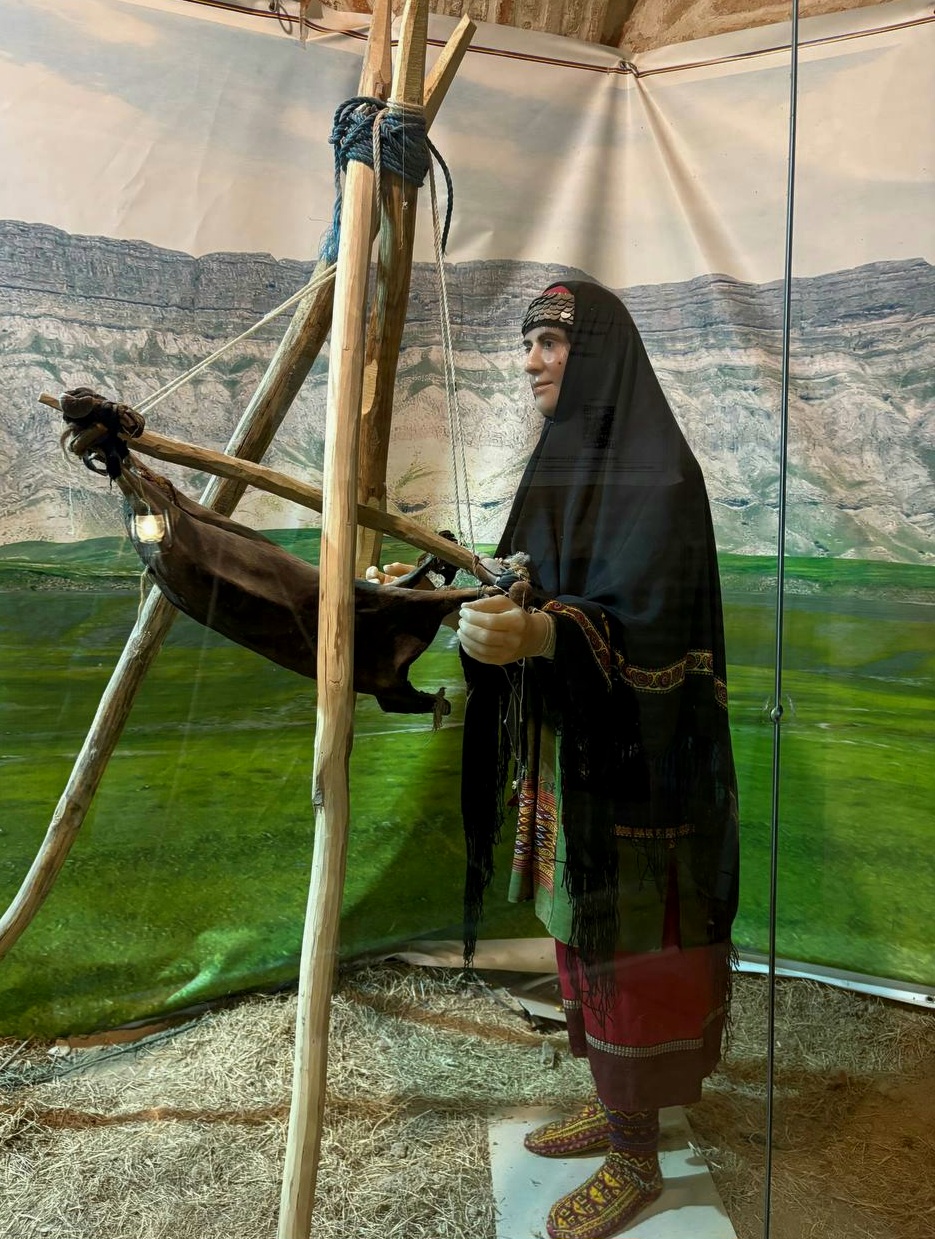

Between these booths and showcases, there were a few related posters about the rituals and ceremonies as well.

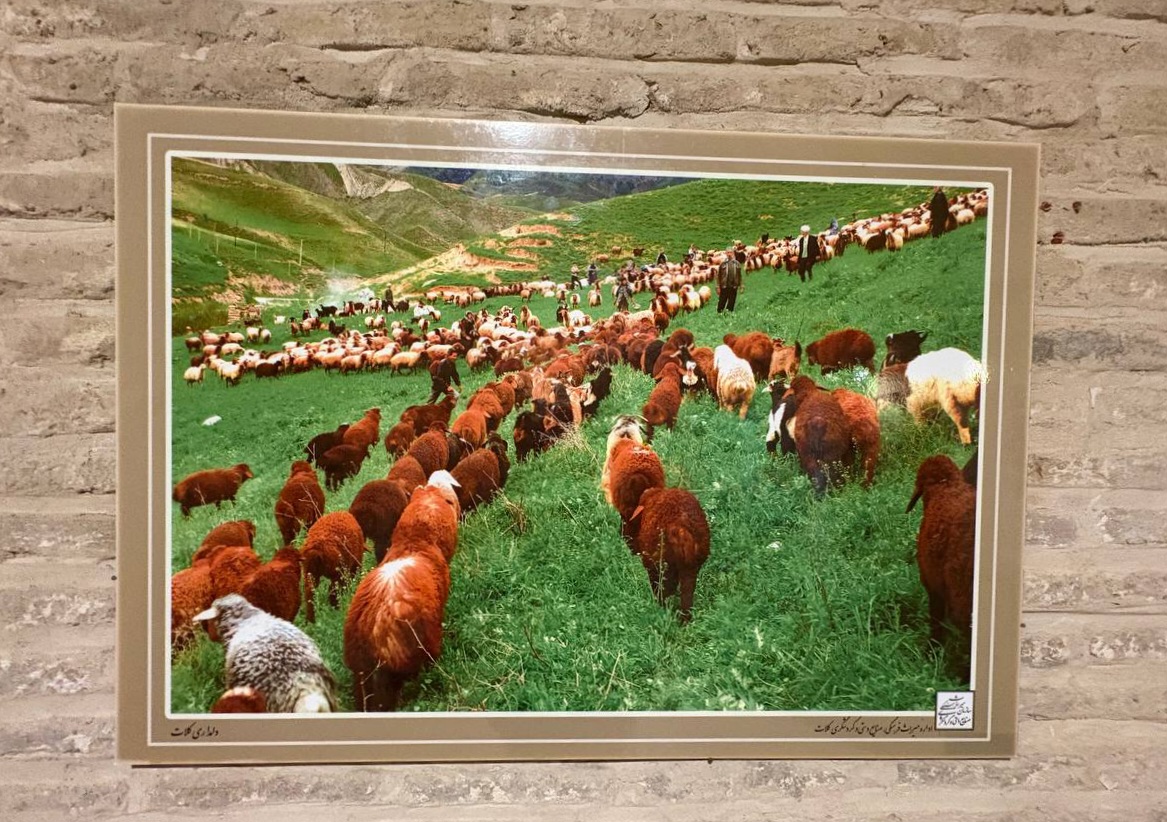
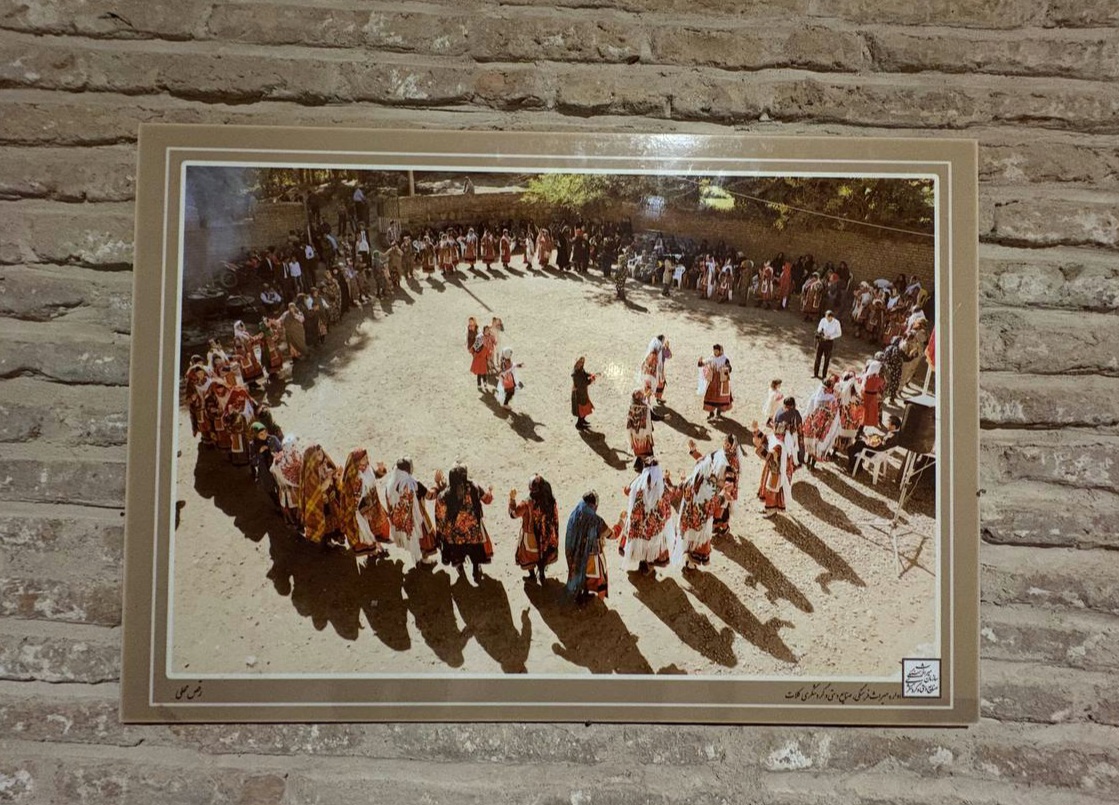
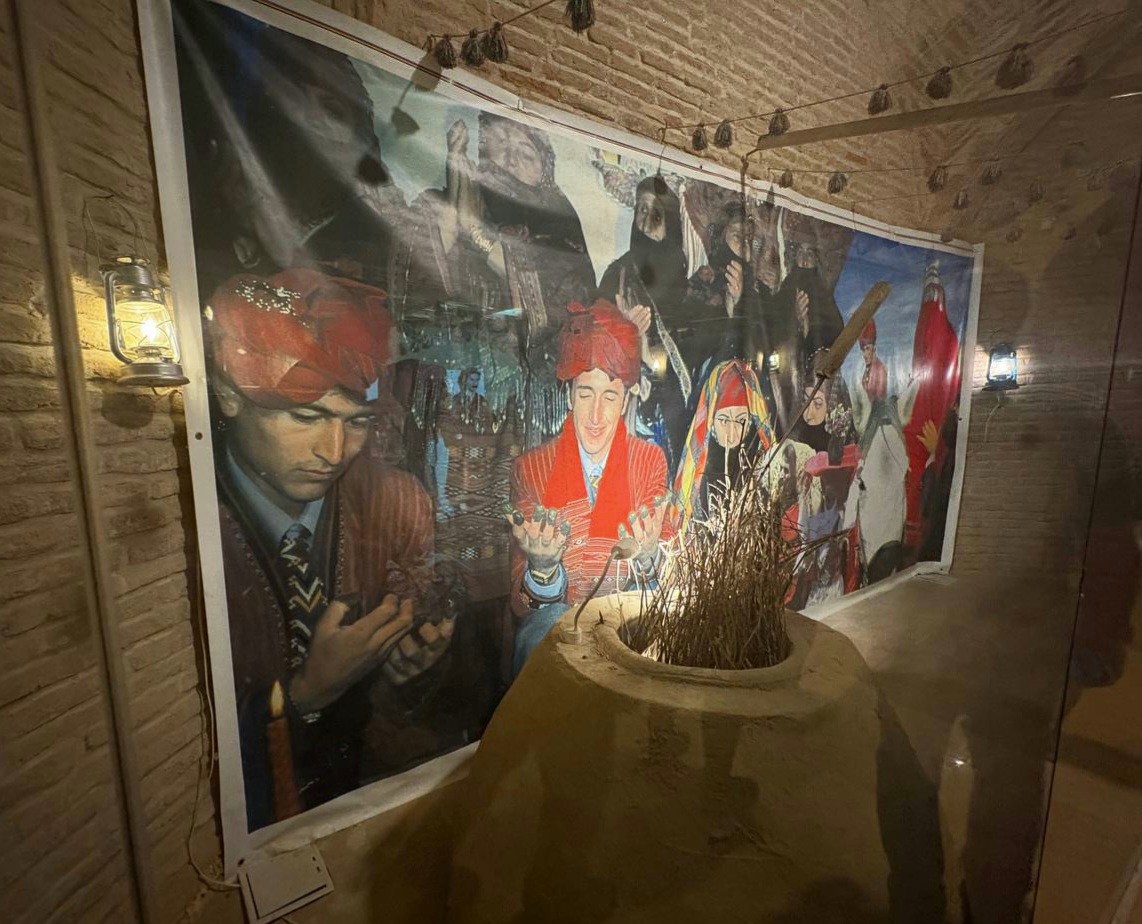
In my opinion, one of the most fascinating and mysterious parts of the palace is the crypt. It's a kind of large basement that you go down the stairs to, and the atmosphere completely changes; it's darker, quieter, and cooler than the other parts. It has a special feeling, as if you've entered the heart of history. Its walls are mostly made of brick, giving it an old and heavy feel that clearly shows it has aged for centuries. In some places, you can still see the marks of traditional architectural arches and vaults. It was a bit creepy too! Some say it was used to store valuable objects, or even that it might have been a kind of prison, because it's very enclosed and cozy. On the walls, there were photos of the age and history of the palace that I will share with you later.



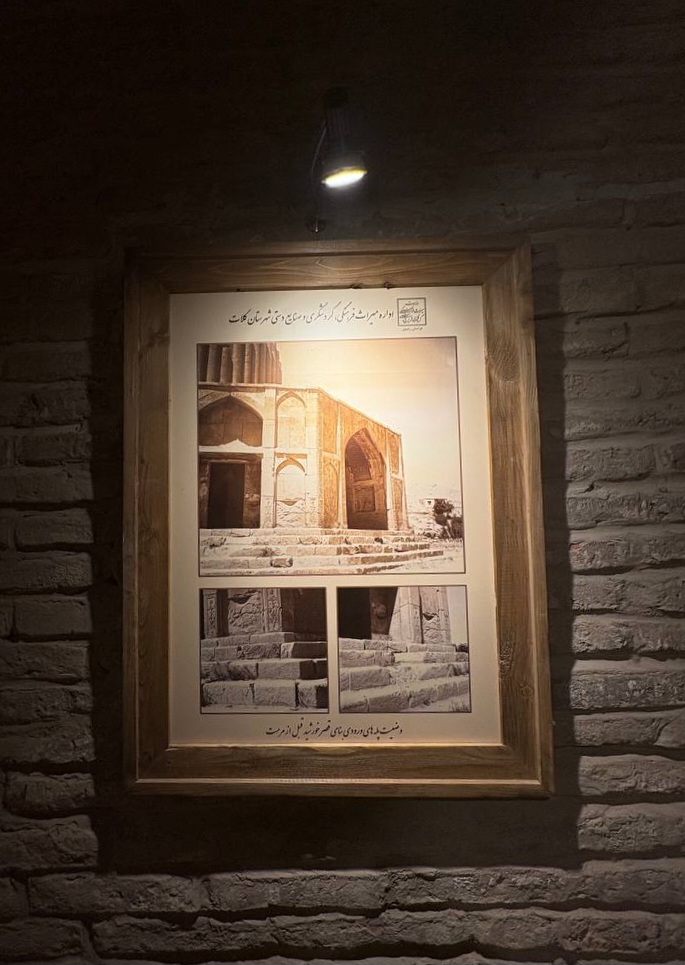
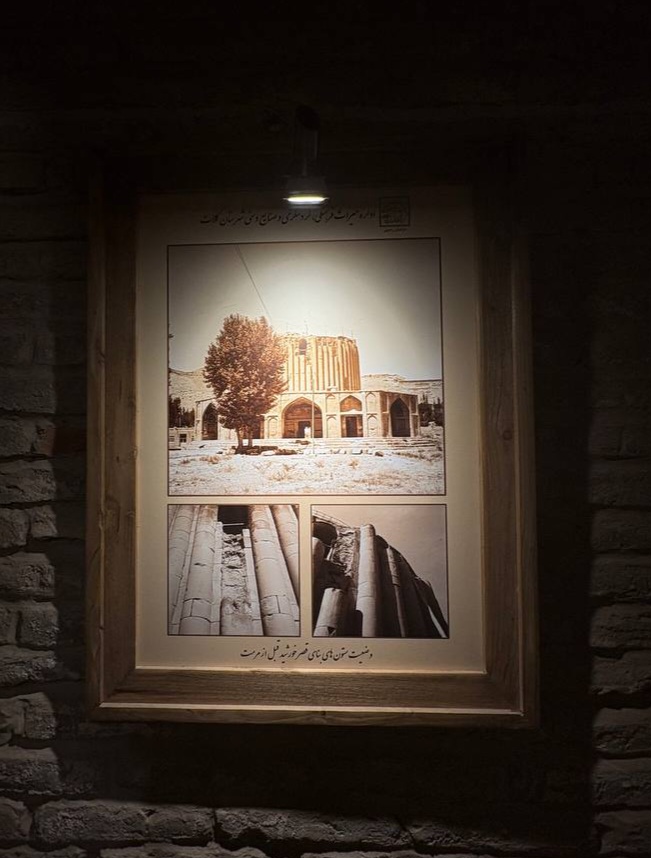

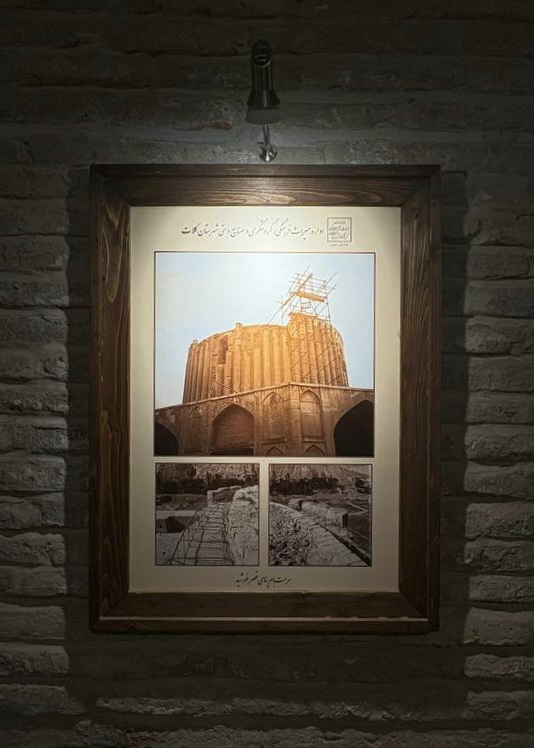
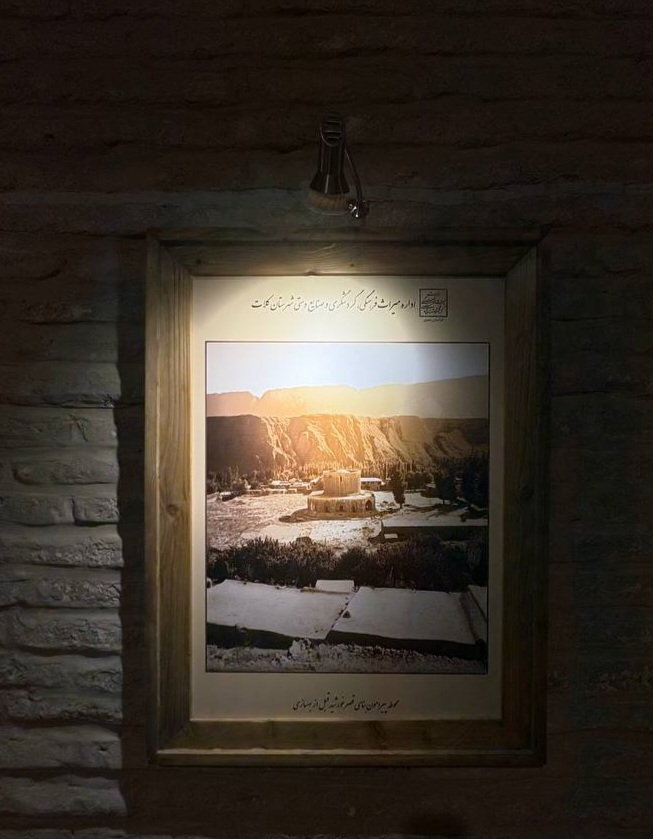
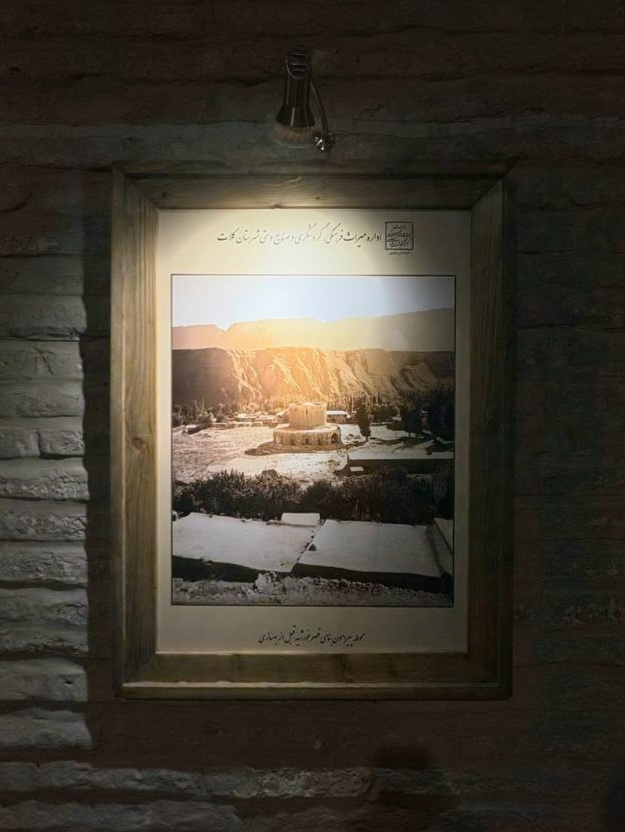
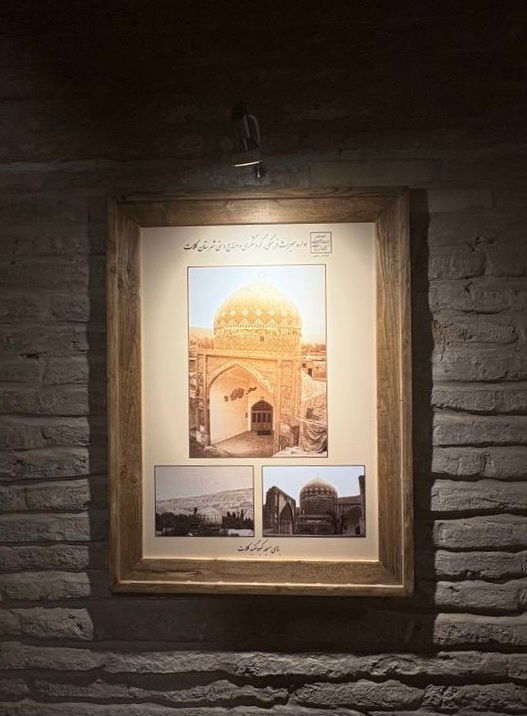
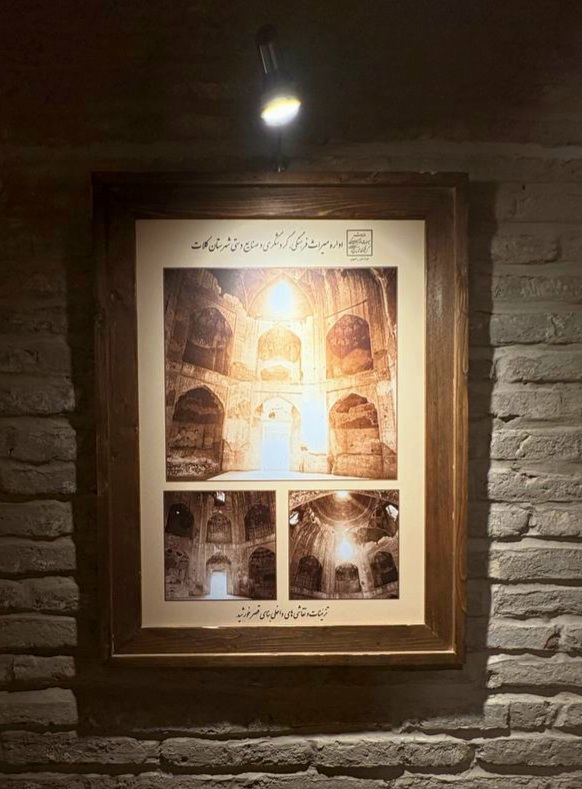
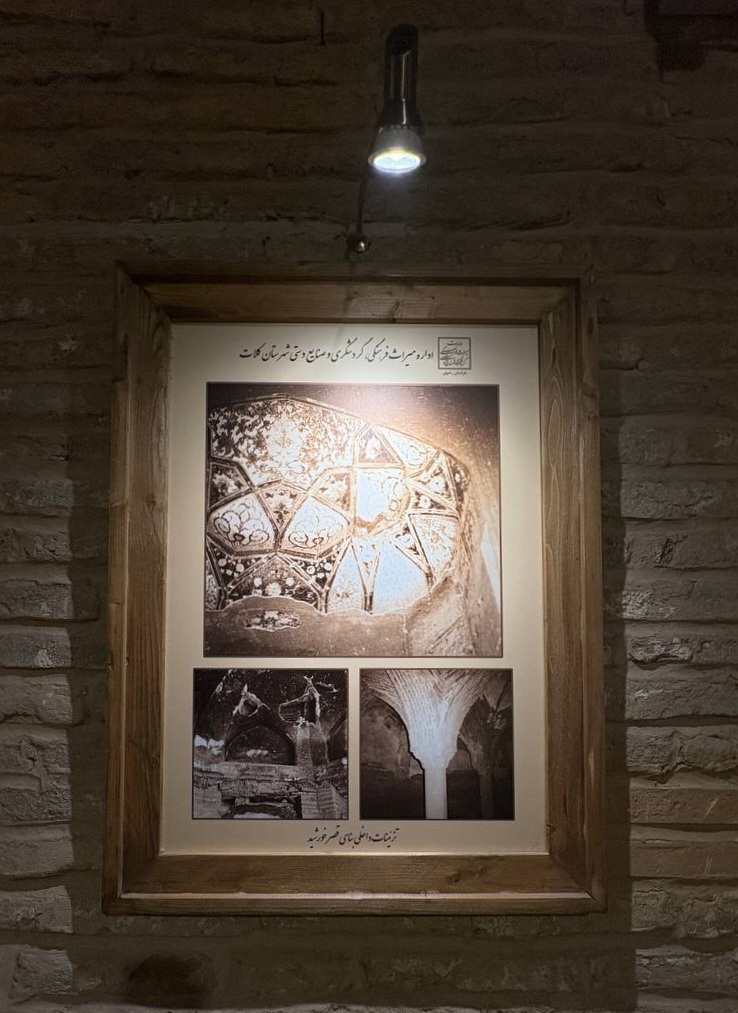
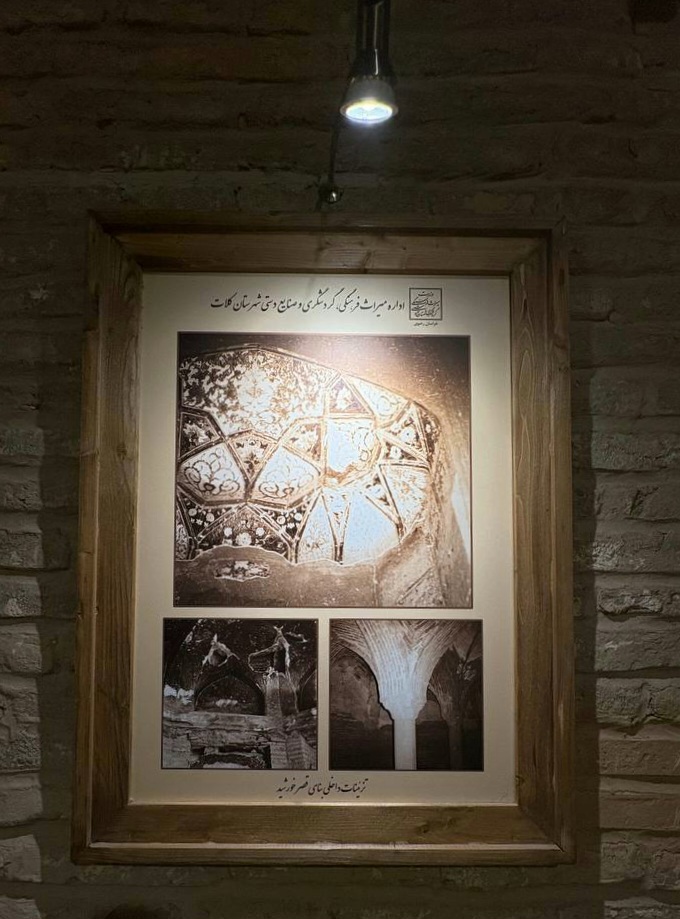




On some boards and photos, additional light had been placed, and on a limited number, there was no light. These signs have been placed so that visitors can better understand what was happening here in the past and what was what.
On some of the signs, historical information has been provided, for example, one of the signs mentioned that Nader Shah Afshar wanted to build this palace as his tomb but never finished it. In a way, it seems they had prepared the basement for something that was never done.
There were also a series of other signs that explained the architecture and structure of the crypt itself, such as what kind of arches it has and why it is so cool even in the summer.
Some signs also show old photos or designs of the possible reconstruction of the palace, which is really cool because you can imagine what this place is going to be or what it was.
Overall, these signs help people connect more easily with the space; they have a guiding feel.

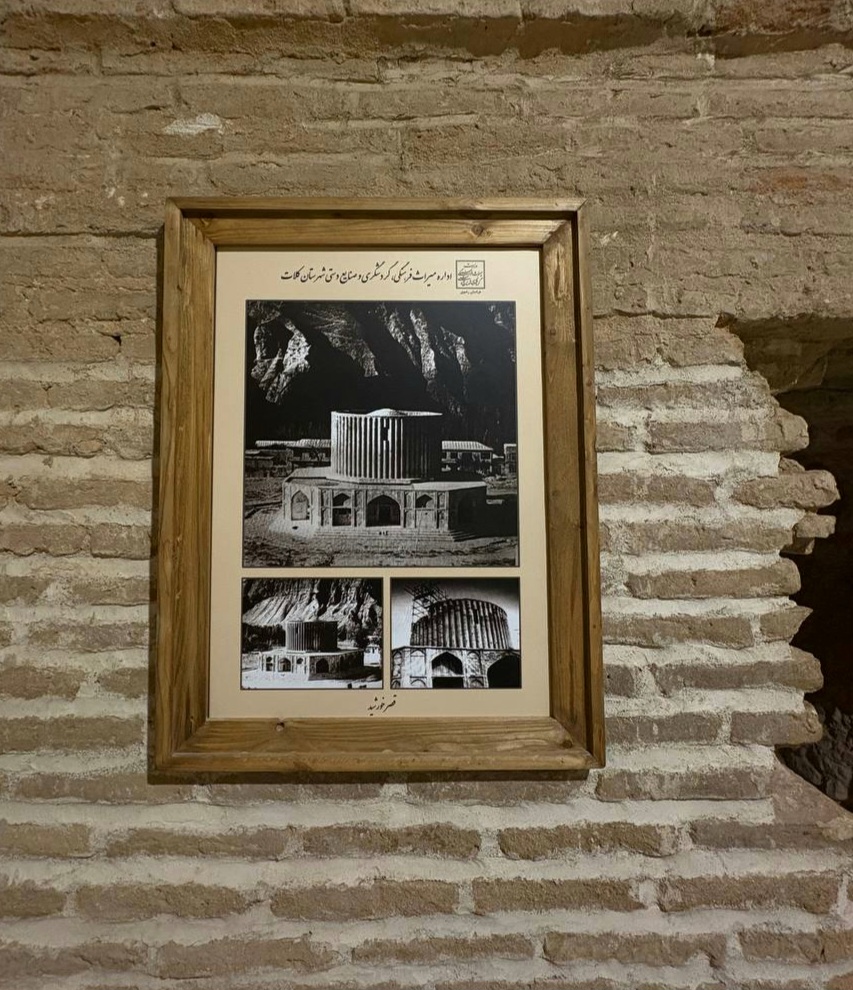
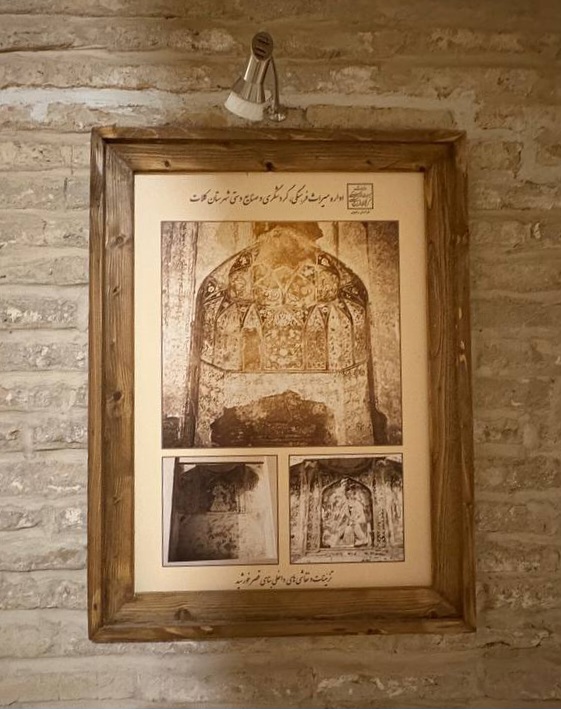
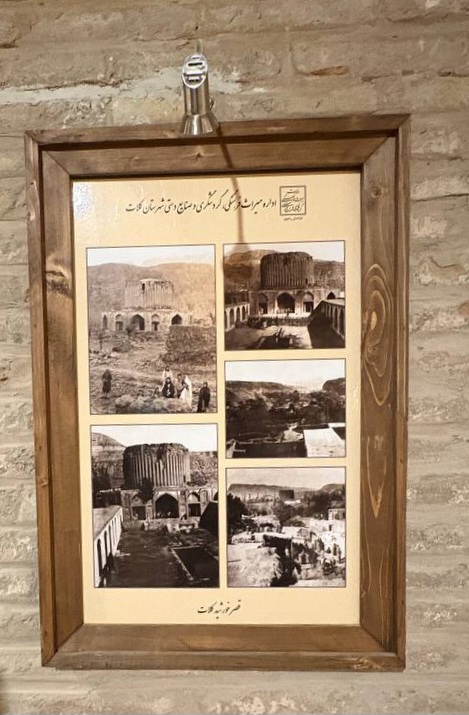

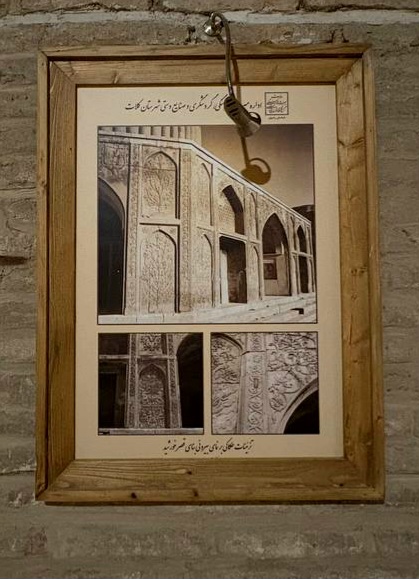
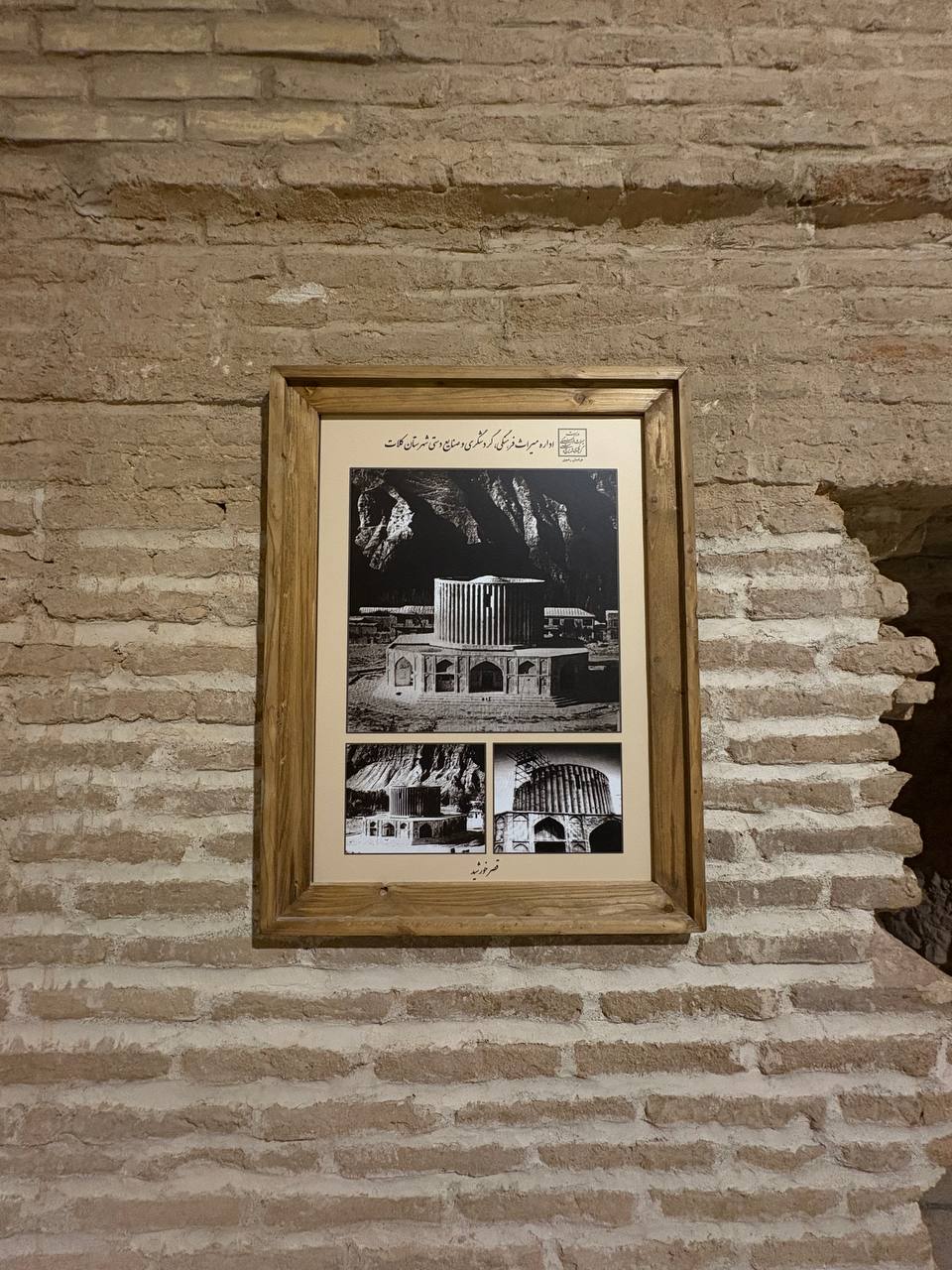
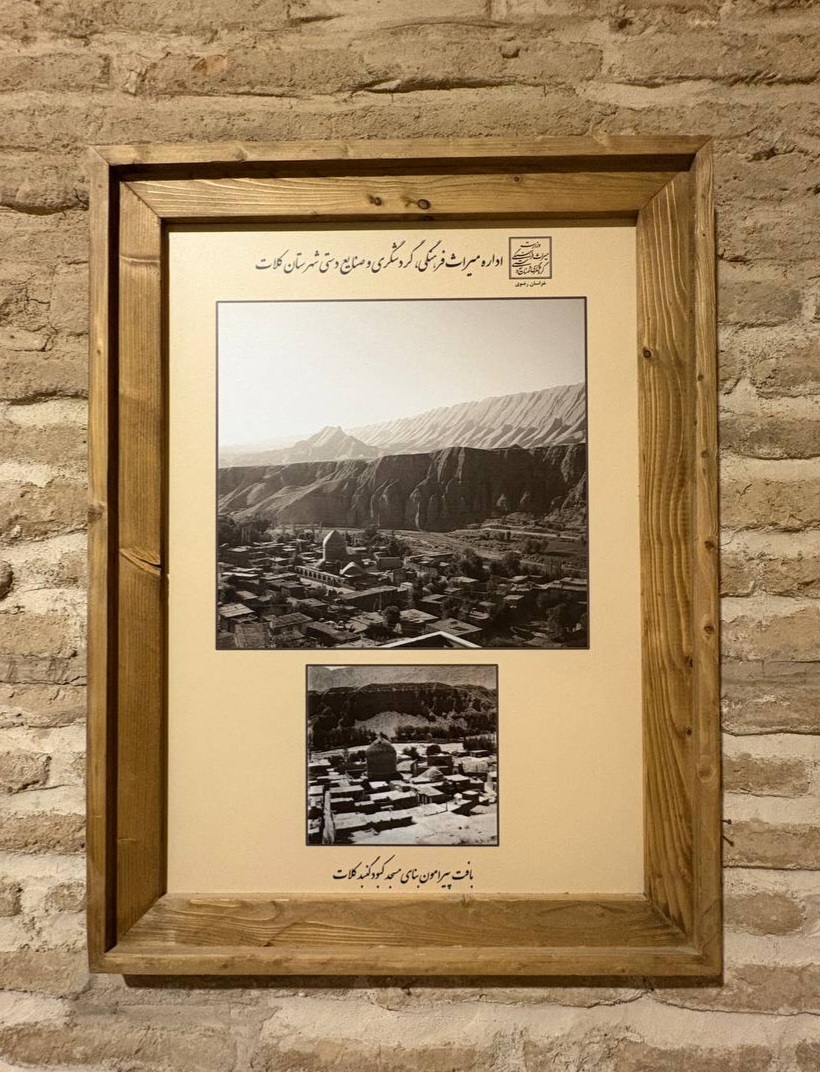
A good feeling was conveyed to me with these photos. How much life has changed from the time of the ancients until now.
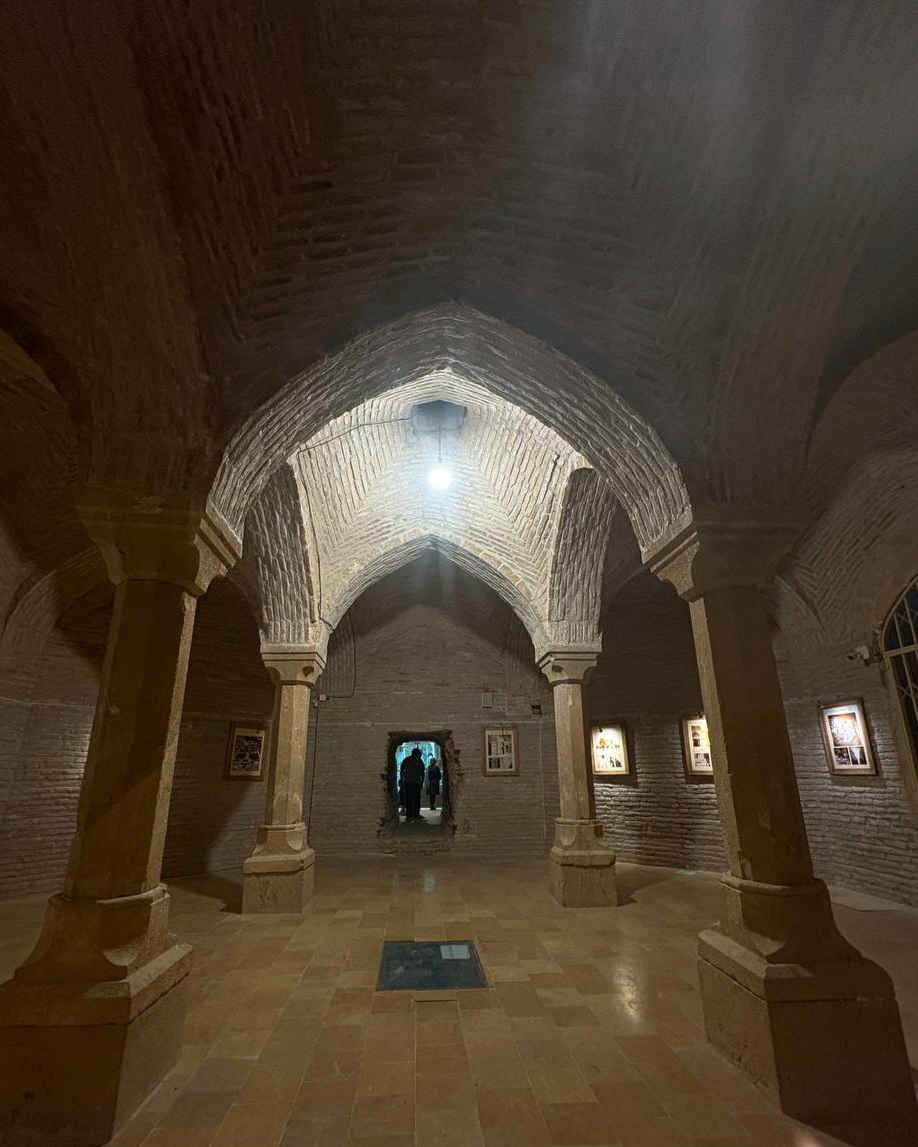
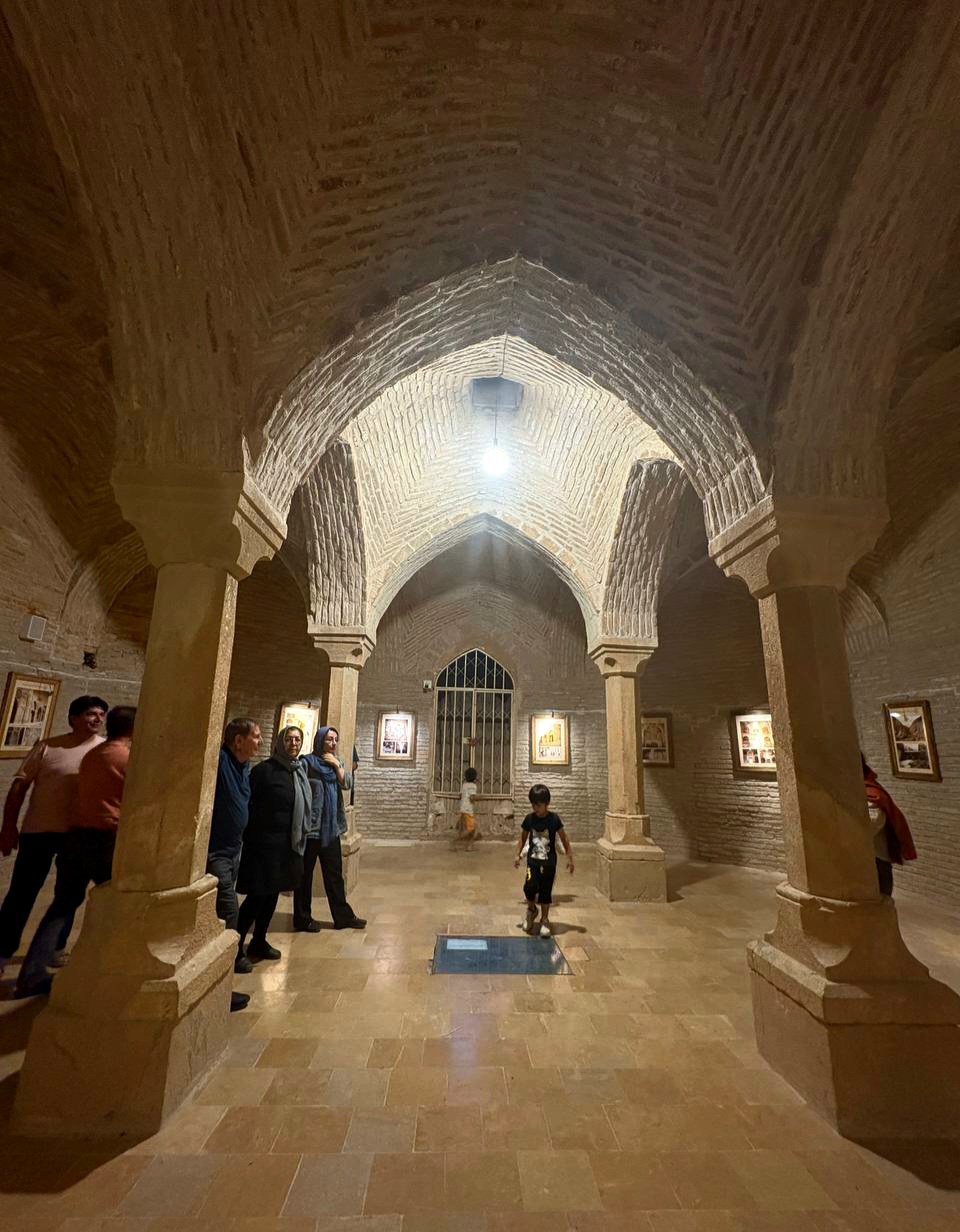
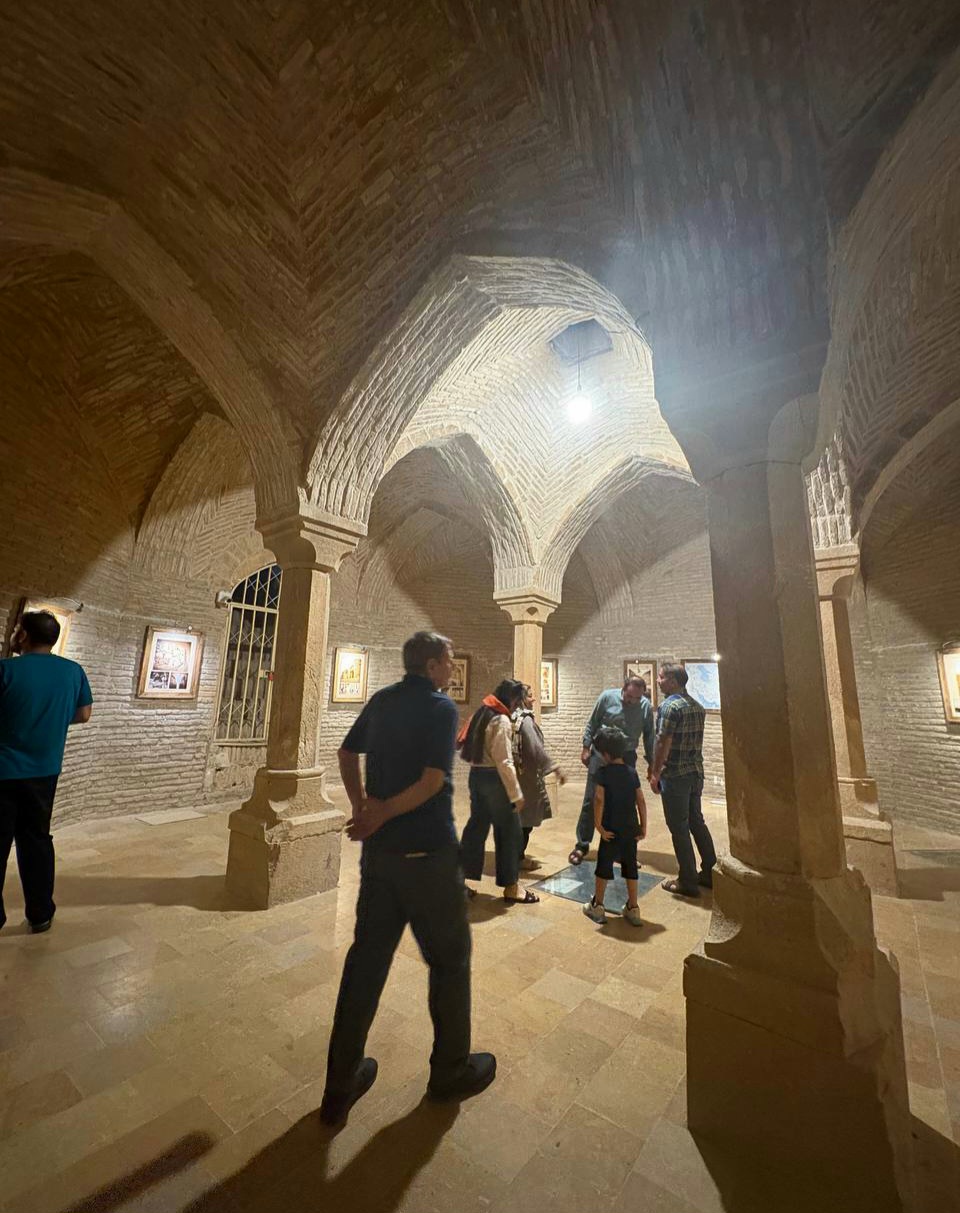
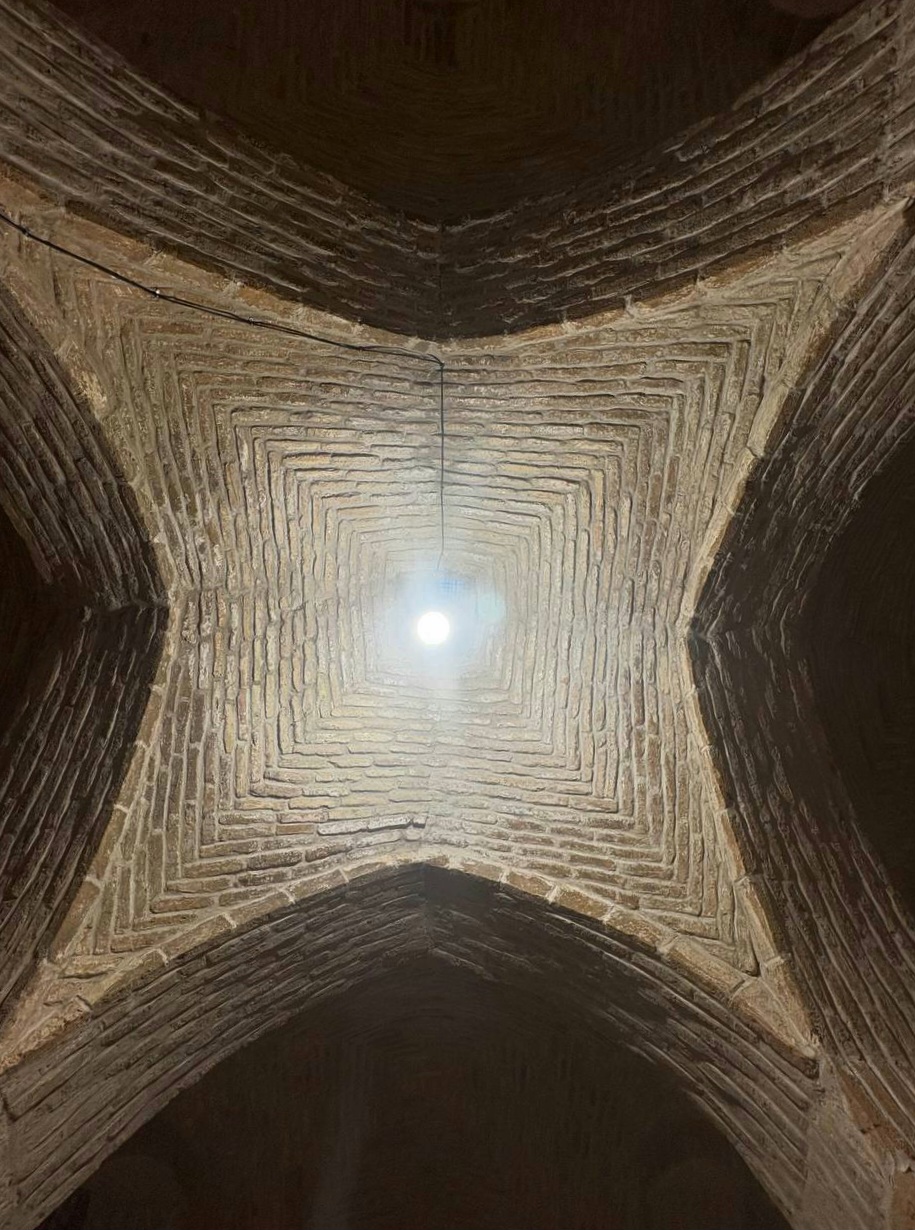
The architecture of the walls had amazed me so much that how in the past, with a lack of facilities, such order and symmetry in the facades can be seen in this grandeur.
It was very special.
I didn't want to leave the palace.
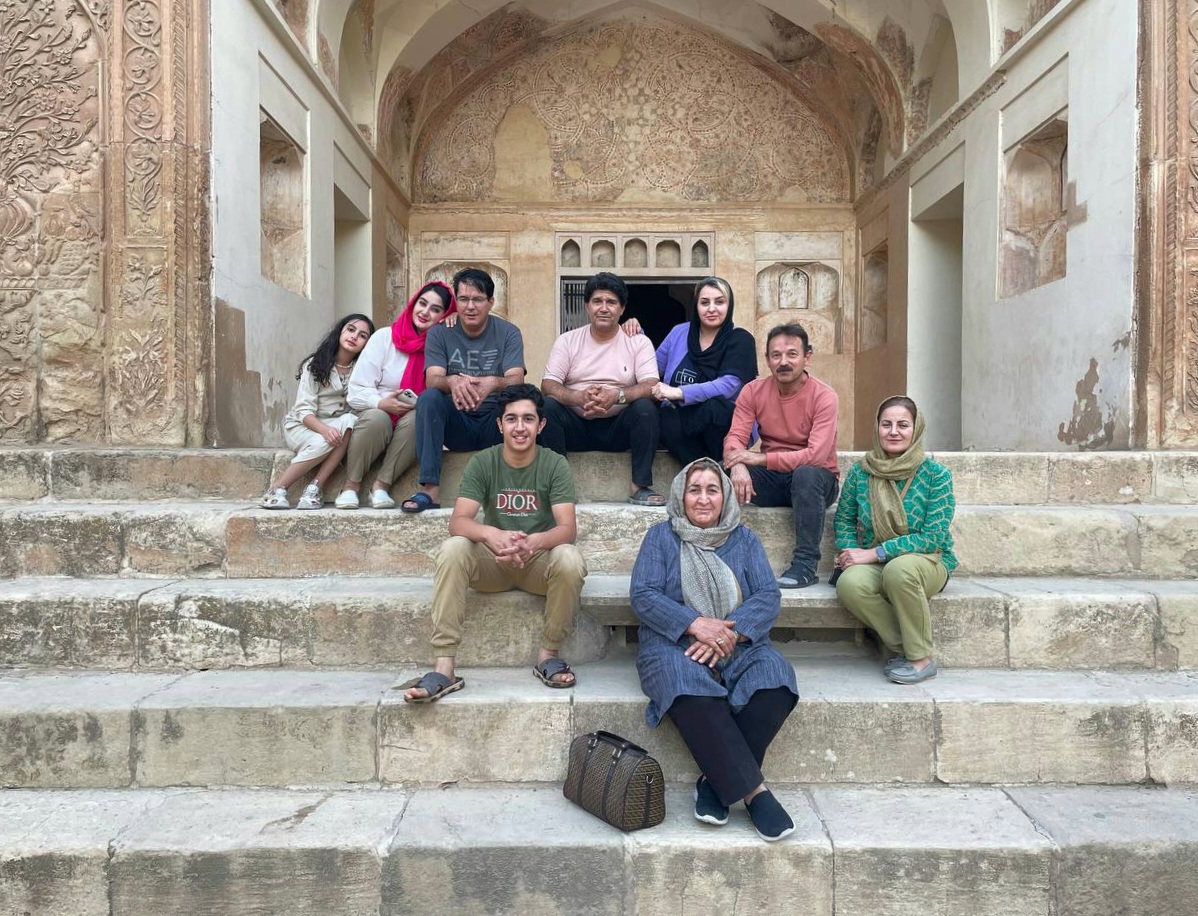
And in the end, we took a group photo in this beautiful place with my companions and I recorded it in my memory album.
It was a very good experience. It had been about 18 years since I had come here. It was a trip full of unique experiences for me. I hope you liked it too. And I hope I was able to convey that feeling of going into the heart of history to you as well.
I love you and I am very happy to be in your company. Until another adventure Goodbye😍

text & photography :@azamsohrabi

Comments (4)
You can check out this post and your own profile on the map. Be part of the Worldmappin Community and join our Discord Channel to get in touch with other travelers, ask questions or just be updated on our latest features.
@tipu curate
Upvoted 👌 (Mana: 48/58) Liquid rewards.
Friends, after the publication of today's post, I had gone to an area where the internet did not assist me in editing. For this reason, I edited it again. Thanks to the @worldmappin community
You are welcome @azamsohrabi👍
Congratulations @azamsohrabi! You have completed the following achievement on the Hive blockchain And have been rewarded with New badge(s)
Your next target is to reach 14000 upvotes.
You can view your badges on your board and compare yourself to others in the Ranking If you no longer want to receive notifications, reply to this comment with the word
STOPCheck out our last posts: